




So what is it that makes us feel connected? Is it the time we spend with ourselves, the platonic and romantic relationships we build with people we are close to, or is it simply the environment we immerse ourselves in?
Connection is such a fundamental part of our experiences in our everyday lives. It is easy to overlook conversations and shared experiences that play a role in who we are as a person. This is especially so when we are wrapped up in the hustle and bustle of our intense lives.
When reflecting on what makes me feel connected personally, the first thing that comes to mind is being in Cardiff. I love Cardiff, and will always hype it up to anyone that has not experienced the place. I have really made myself feel at home here, which makes me feel connected. I am always on the hunt to immerse myself in new experiences and visit new places.
Second, it’s the relationship I’ve built with my close friends at university. I feel honoured to have such a close network of friends who look out for me and vice versa.
Finally, Quench our magazine makes me feel connected. This is not just because of the experiences it’s given me in something I am so passionate about, but also because of the people I’ve connected with. I feel connected to everyone at Quench, and the support and patience people have is second to none. It is an honour to facilitate a community of like-minded people who all share similar desires and motivations.
When I first became EIC for Quench, I had one thing in mind. Not only would it be a space for people to learn new skills, be creative, and build their portfolios, but also for people to build new connections, not just as contributors, page designers, illustrators or editors - but as friends. It is very encouraging for me to see that Quench is such a welcoming community, and it has been an honour to see so many people connect.
We take pride in being warmly inclusive and are always eager to meet new people. It is never too late to get involved, whether that is being a photographer or writing a article, so what is stopping you? As we look back on our progression in the years to come, I am sure we will reflect fondly on the connections we have made in student media.
I think it is really important to reflect on the connections we make. I hope upon reading this issue, you will feel inspired to take a step back from the conflict and uncertainty in the world around us, and reflect on what actually makes us feel connected. Living in a environment especially at university where we are constantly under pressure, we often fall into a pattern of comparing and thinking too harshly of ourselves. We need to appreciate what we know we do in fact have, and that is connections.
I really hope you enjoy reading this issue and become grounded in what makes you feel connected. Whether that be the relationships you have, or the spaces you immerse yourself in!
Until next time,
It’s 2025, and like many other final year students, I have been in the thick of pondering postgrad existence; my life has been a string of masters applications and perusing jobs boards. Cue a slew of tangibly awkward Zoom interviews, consisting of me talking blindly into a computer in desperate search of my future.
Drafting multiple applications has forced me to consider exactly why I want to go into journalism. A recent conversation with Katie prompted me to reflect on what it is exactly that has drawn me to the profession - interviewing people. Talking to people from all walks of life and gaining a candid insight into worlds far from your own is what makes journalism invigorating and worthwhile. Listening to, understanding and relating to those whom you might never have thought you would - has so far taught me that we all have more in common than not.
Making connections with people I would otherwise never encounter is hands-down the most rewarding part of putting together a magazine. Specifically, this issue features my interview with Aberystwyth University’s Kink Society, which whilst also being extremely informative, was just a really fun project to work on.
It’s ironic that in this era of ‘digital connectivity’, it’s easier than ever to feel isolated, which is why Quench is undeniably one of the most important aspects of my uni experience. I feel proud that we’ve cultivated a web of creatives across campus who are bound together by friendship, as well as a shared passion for telling stories and listening to them.
This issue explores connect and disconnect, disjuncture and communion, splitting apart and joining together. We interrogate the connection between things, people and cultures to ask - what makes you feel connected to this world and who you are in it?
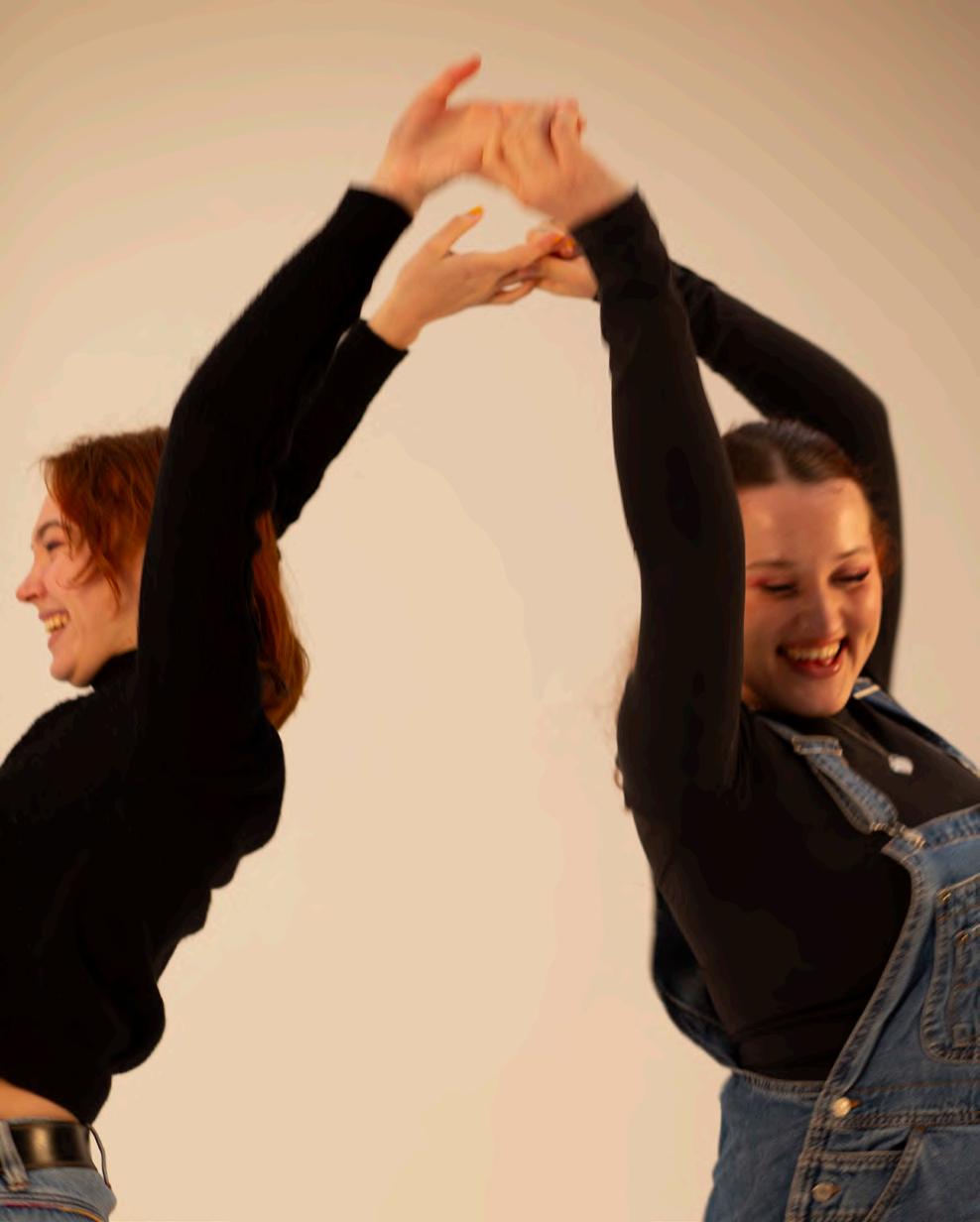
It’s February, and I can’t shake the feeling of being a little lost, a little out of place. It feels like there’s this everpresent pressure to “figure it all out”, to lock in a career and commitment. My closest friends are graduating this year, which leaves me grappling with the dawning reality that journalism–magazine journalism, in particular–is unbelievably competitive. It feels like every opportunity has dozens of people vying for it, each as passionate and determined as the next–it’s daunting to say the least.
In the middle of all this uncertainty, there’s something so grounding about being part of Quench. The connection to this team has been a reminder that I’m not navigating these unfamiliar waters alone. Having spoken with so many members of the team, I realise almost everyone trying to break into this industry feels the same way These conversations remind me that being part of the creative industry isn’t just about the work; it’s about the people –cultivating their stories into the written word connects us all.
It’s exactly this that inspired me to develop our Beyond section, which now features interviews with Cardiff Alumni working in creative spaces. It bridges the gap between where we are now, and where we hope to be. Interviewing so many successful creatives make my dream career feel a little closer. It is comforting to know that people have stood in our shoes and have made into the industry, creating work that they are proud of. Maybe feeling lost isn’t so bad when you have people and stories to guide you–if they can make it, why can’t we?




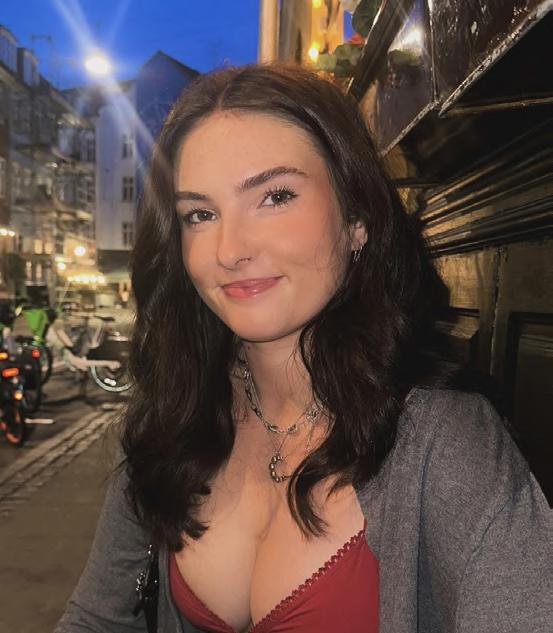




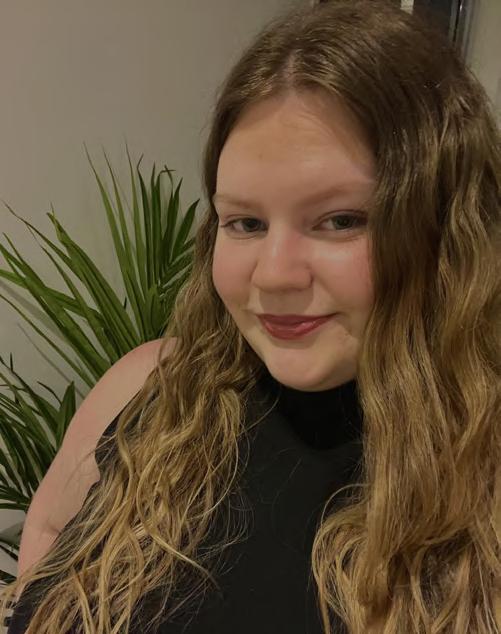


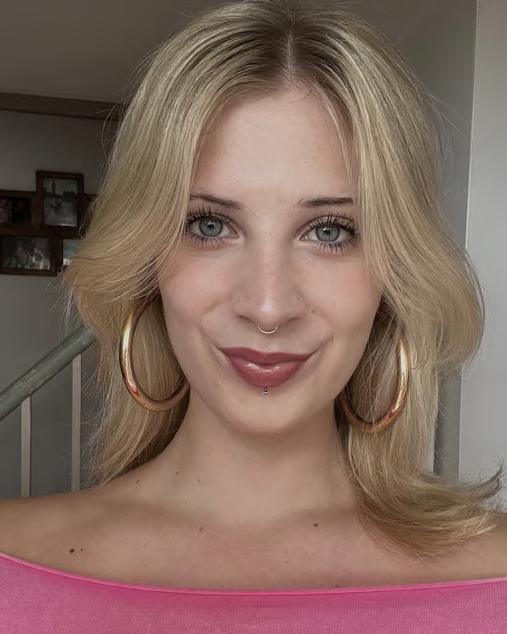


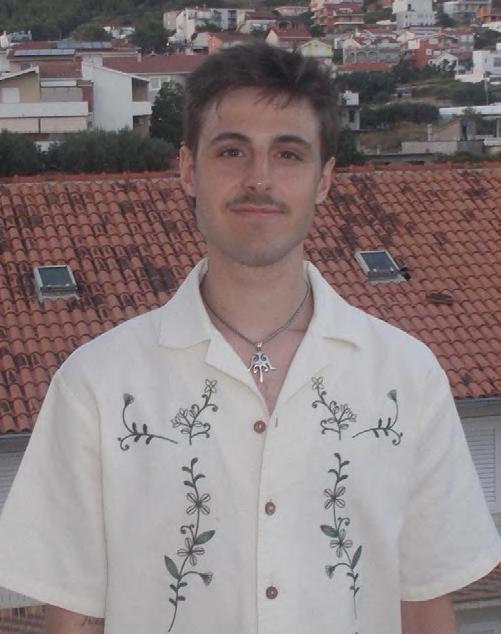

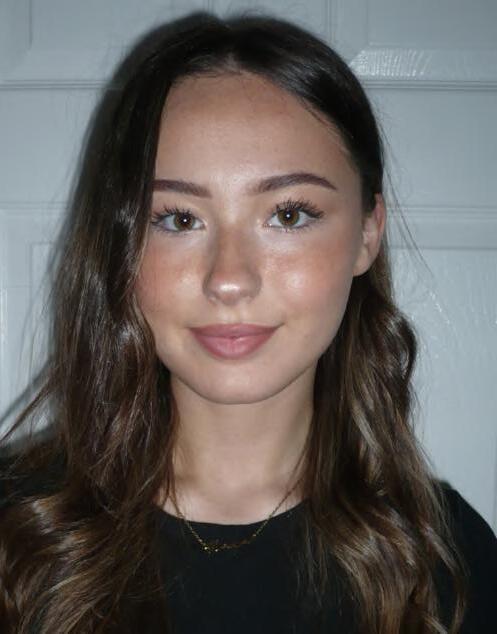

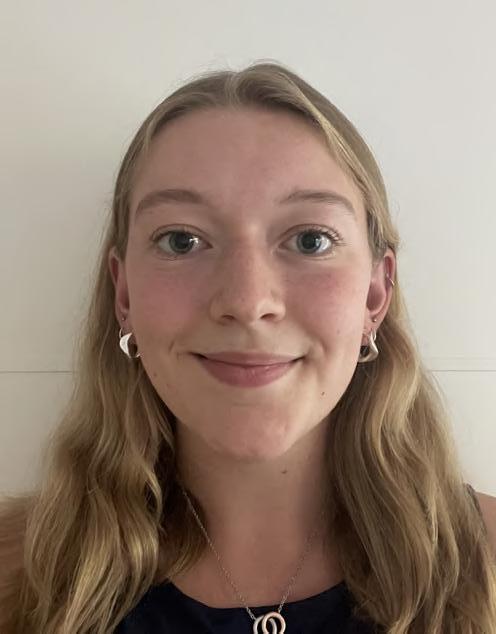








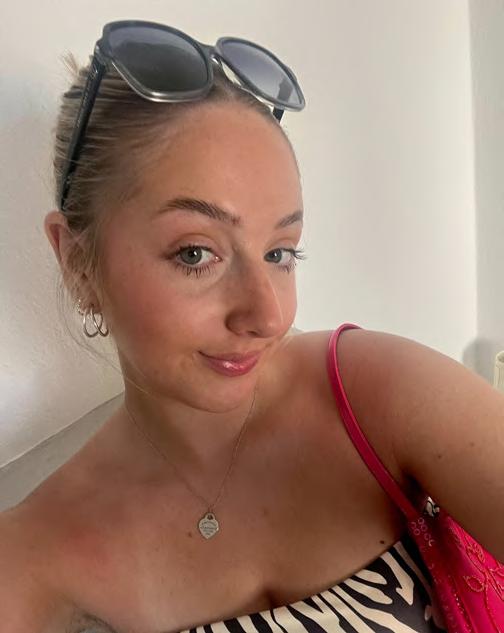


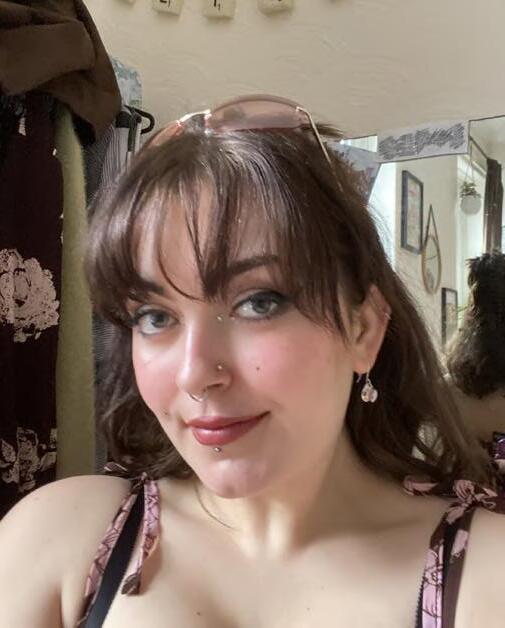


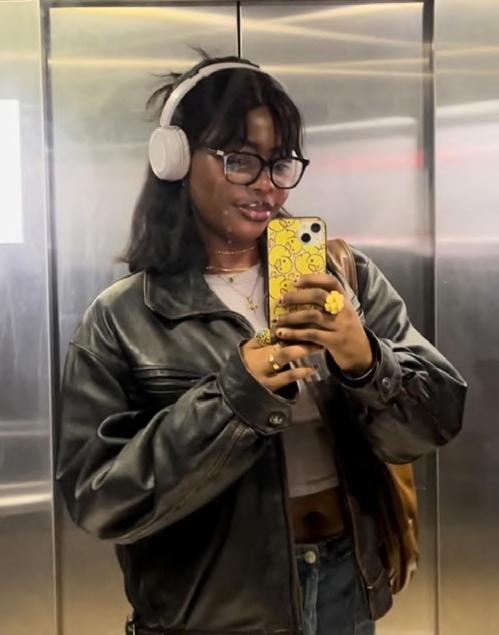
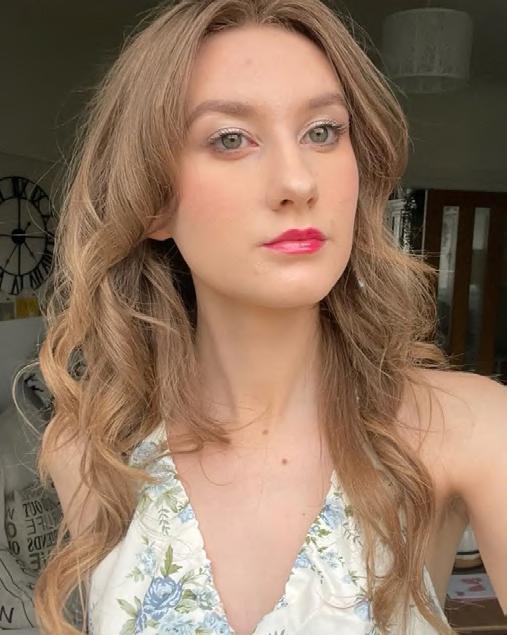


Special thank you to Teddy’s Place for letting us use their photography studio for this issue
models featured: Grace Ward Smith
Poppy Phelps
photography by: Thandi Carklin
Jamia Hussain
lighting: Jacob Stewart-Brown


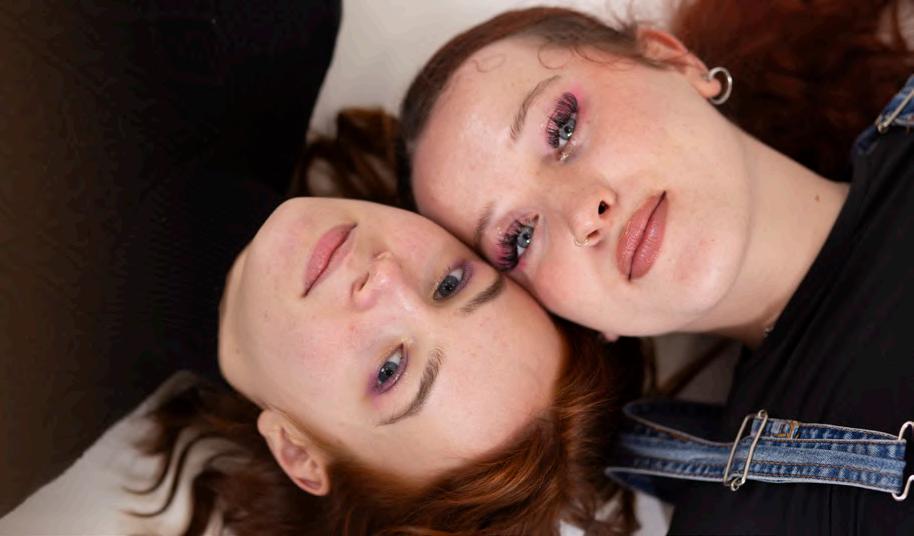
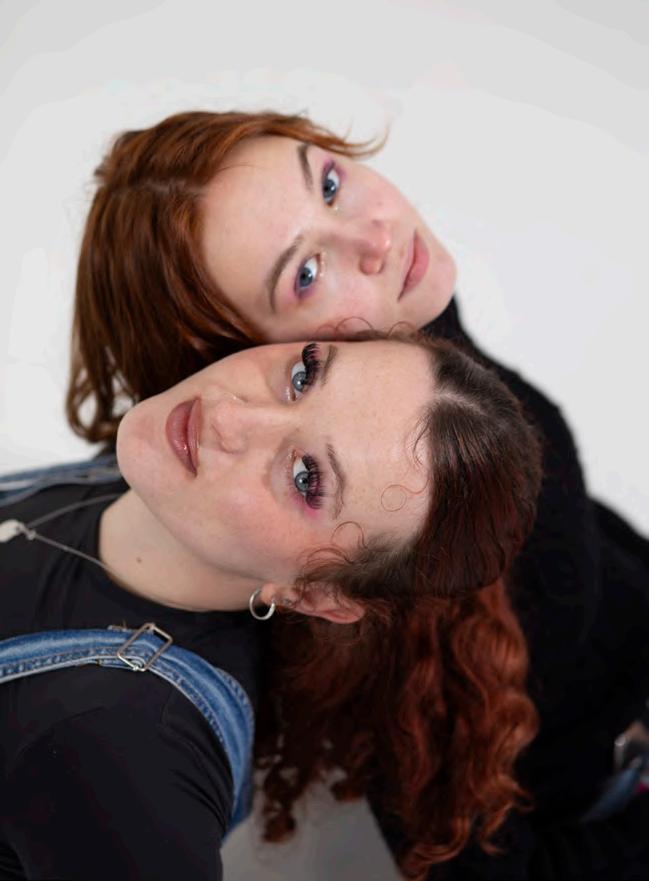

In the wise words of Dolly Alderton, “Nearly everything I know about love, I’ve learned from my long-term friendships with women.”
This quote resonates with me, especially at university. There are times when you may be feeling down or homesick and whilst university can be easily romanticised, it’s also tough and stressful. Whether it’s deadlines or ‘hangxiety’, female friendships are an anchor that can provide an antidote to that homesick feeling.
For me, embracing and nurturing new friendships is the best way to cope with missing home as you’re actively creating a new sense of belonging. Whilst not everybody you meet is going to be your new best friend, putting yourself in social situations like joining societies or going to events will help you come across your people.
The friendships you form at university grow quickly, and soon your friends become like a second family that you can often catch a glimpse of home in. Whether it’s a housemate making you a cup of tea using Yorkshire tea bags like your mum, following family recipes for your house Christmas dinner, or drunkenly singing songs that remind you of home; it is these moments that help ease homesickness.
The experiences you have with your friends at university helps you appreciate the parallels between the new life that you are building and your life at home, and how university is really not so scary or different after all, through the kindness of others making it feel like home.
words by: Orla Duncan
Having experienced life on my own for the first time, I’ve been learning to do things that make university life feel less like a holiday home, but more like a home from home.
Something I find incredibly important is to make myself home cooked food, as it’s very easy to fall into routines of ordering takeaways or having that pot noodle that has been staring you in the face all day. However, nothing beats a home cooked meal, which is why I would recommend learning your favourite recipes when feeling homesick to have a taste of familiarity when everything else feels so overwhelming, as food has the power to give us a sense of comfort when we need it most.
Additionally, joining a society helped me find people who had similar life experiences and interests to me, which made me feel instantly at ease and made me realise that people can also feel like home! To find a space where you are able to be yourself and be free of any worries and stress is so important when being at university, being able to talk through your feelings, thoughts and worries with friends also helps to make yourself feel less alone, as the connections established through shared experiences helps to bring comfort and an understanding that we are all in the same boat.
To me, the people you surround yourself with are vital in ensuring your down-time is spent making memories and living life to the fullest, away from home.
words by: Ola Rzeszut design by: Katie Storrie illustration by: Olivia Nilsen

For as long as I can remember, my older brother Jude has been a built-in best friend. Growing up was made easy by having someone similar in age to talk to and tease, someone who I could be vulnerable with, yet still get frustrated by, knowing that our friendship would remain the same. Ultimately, siblings test our patience like no other, yet they can still provide a source of great comfort. When Jude and I were younger, he would deliberately aggravate me by subtly pulling faces, which often went unnoticed by those around me. At the time I would grow frustrated, but as I reflect back on those childhood memories, I now see them as character building experiences!
The resentment I felt in those moments would always be overshadowed by the joy we shared through our inside jokes and bursts of laughter. Although Jude and I rarely argued, unlike most siblings, and even now we will only have an occasional disagreement.
In fact, when Jude first went to university I found it difficult adjusting to this transition, which made me value our time together back home even more.
As I approach my final year at university, I look back on the years that have defined me, from the unknowing 18-year-old I once was, to the person I am now at 21. Jude has been a constant throughout my journey, and as we navigate the early stages of our twenties, we experience the different phases of life together in our own unique way.
words by: Servaise Ratnayake
It’s friday afternoon, I’m working on a deadline and my phone starts ringing. My sister is attempting to FaceTime me. I answer and for the first 10 seconds nobody says anything…
“What do you want?” I say.
“I need to lock in bro” she replies. As it turns out my sister also has deadlines.
These spontaneous FaceTime calls have become the norm since my return to university for my third and final year of study. Our daily detailed, face-to-face catch up sessions have been replaced by quiet, virtually connected moments, centred more around appreciating each other’s company rather than deep descriptions of life’s happenings.
To an outward onlooker perhaps these quiet exchanges over video call seem strange, awkward maybe. But for my sister and I, it won’t be long before she calls me another day or vice versa, excited to chat with me about what someone did today in class.
Our non-conversing conversation is inevitably interrupted by her being called down to dinner, so our call ends and we eat separate meals at separate tables. When I am back home, we eat the same meal at the same table and over dinner she is eager to divulge her day at school.
As I sit and listen I am reminded of our FaceTime calls when we are not together. I am grateful to have a little sister who, no matter where I am in the world, wants to share what is going on in her life with me as both a friend and a sibling.
words by: Amber Al-Wafai
There’s a reason that we call a sister or a brother when we get close to them. It’s because, whether you like them all the time or not, your siblings are your best friends from day one.
I truly believe that there is no greater gift than a parent giving their child a sibling, someone to share your childhood memories with, big or small. Don’t get me wrong, there have been times when I would wonder if being an only child would be easier than having to argue between the three of us about who got to sit in the middle seat in the car, who gets the pink cup and trying to find out who has been stealing my clothes?
However, from personal experience, the love between siblings grows as you get older and become more mature. You truly understand their contribution to making your house a home.
I think that simply knowing that your sibling is there at the end of the day provides a feeling of safety that is truly indescribable unless you’ve experienced it yourself. To me, growing up with two sisters – one older and one younger – you will always have someone to look up to or someone who looks up to you, not only as a sibling but as a friend.
As I reflect on how close we’ve come as siblings and how vital they were to my personal growth, it really makes you realise you would never change them for the world.
words by: Carys Crandon design by: Katie Storrie
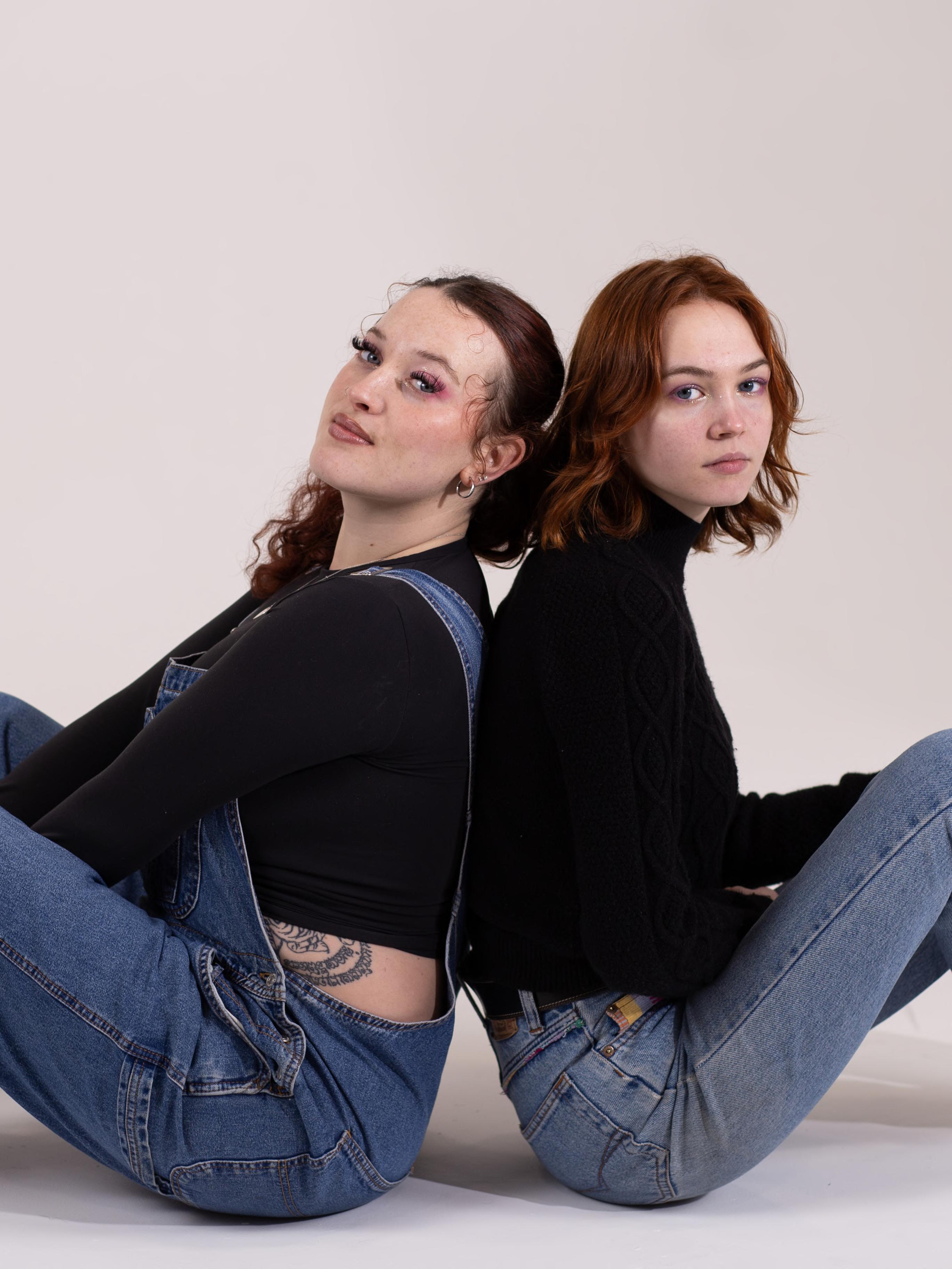

I’m quite an independent and introverted person, but even I need to be around people and feel connected to those around me. However, this is easier said than done; I cherish my alone time, but sometimes I get so sucked in that I end up spending hours in my room alone, and miss out on hanging out with my housemates or on a social occasion. On the other hand, I find that when I spend lots of time socialising with new people, my social battery gets drained pretty quickly, and I just switch off from whatever is going on and stop interacting with those around me. Then all I crave is to be back in my room, on my own, in my safe space. The key to it all, is finding the right balance between connection and independence that works for you and your life.
Growing up, my parents always emphasised the importance of independence. They were very conscious of the fact that they wanted me and my sister to become independent people, and do stuff for ourselves, from about 10 or 11 years old. They didn’t just go “ok here is the world, find out how to navigate it by yourself”, it was little things that they did. My mum started leaving us at home alone for half an hour or so, we got our first set of house keys cut, I got my first phone, we walked home from school without one of our parents present. It was just small things that were built on as we got older and entered our teenage years. I am forever grateful for my parents bringing me up this way, as it has made me the person I am today, and has allowed me to be able to live independently. Though, I think sometimes I lean too much into ‘being independent’, that I don’t ask for help as much as I could and I tend to isolate myself when I’m feeling sad or stressed. This is when independence turns into isolation, and becomes a negative. When I feel myself slipping into those habits, I force myself to leave the house, go on a walk to reconnect with nature or go to somewhere where I know social connection will be present, like a dance class.
Human connection is something we all desire to have. Whether that be social connection and connecting with the people around us, or self-connection and feeling connected to our inner selves. Still, real connection can be hard to find, especially for fellow introverts like myself, who find socialising and connecting with new and old friends difficult.
Personally, I have found that in certain social situations, where I am meeting lots of new people for the first time, I just have to put myself out there, because what is the worst that can happen?
Staying connected to your family and friends is also another feat to overcome. In this day and age with social media and technology that allows us to call anyone, wherever we are, at any time of the day, it is a misconception that keeping connected with loved ones is simple. But for some, losing touch with those closest to us can happen quite easily, particularly for those of us who have moved away to university. If we want to stay connected with our friends and family, it is on us to make an effort, messaging often to check up on our friends from home, facetiming your parents weekly to catch up on what’s been happening in their lives.
In order to find the correct balance for you, it is vital that you set boundaries for yourself, so that you are not constantly burnt out from going out and socialising every day of the week, but also not hauled up in your room 24/7, isolated, away from the rest of the world.
We’re all a different mixture of introverted and extroverted, it doesn’t matter how much of either we are, we all strive to be sociable individuals, who can simultaneously do things independently; that is the ultimate goal. You are not always going to get the balance of this right, trust me, but figuring out the balance that works for you will revolutionise your life and the way you live it.
words by: Ella Collis design by: Katie Storrie
“Human connection is something we all desire to have...”
From joint ‘rope’ socials with the Cave Society to navigating online trolls, Aber KinkSoc President Alex talks to Quench’s Julia Bottoms about Aberystwyth’s very own kink society
Ah, University - that cherished baptism into adulthood, an epoch of self-discovery and exploration, and perhaps regrettably for many, the most sexual freedom you will ever have. But in the charming seafront university town of Aberystwyth, students are exploring questions of selfidentity and expression in slightly less conventional terms - through kink.
Conceived just last year, Aber KinkSoc welcomes students and non-students over 18, currently boasting over 130 members on Discord. The society explores kink as a means to navigate consent in a safe space, offering education and opportunities for socialisation around both sexual and non-sexual kinks.
Sitting down for a call with KinkSoc President Alex, I learned how the society was born almost by chance during ‘Shagweek’, the Student Union’s sexual health campaign.
“Last year the SU had a kink educator do an hour-long talk, and someone jokingly said ‘Oh, you should start a society about this’. And I said, ‘Oh…Ok good point, I might!’”
Responding with pithy quips is characteristic of Alex, whose calm and confident demeanor seems to radiate a palpable enthusiasm and instinctive eloquence. Indeed, under Alex’s leadership, the society has blossomed into a thriving community in just a few months.
Just how does one define ‘kink’? Alex explains that the society celebrates a generally fluid definition. “It’s hard to make just one definition because different communities define it differently, and it’s more of an understood concept than a defined word.”
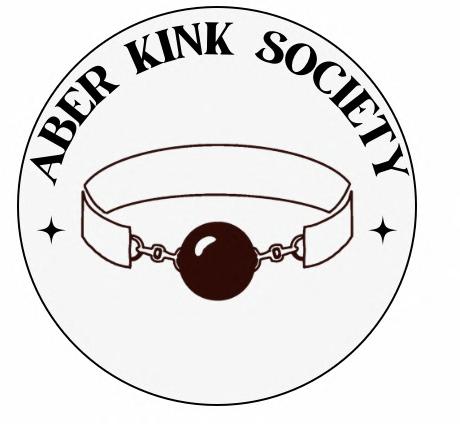
“I would say my definition of a kink is any kind of nonstandard sexual practice or focus”. At the heart of the society is the championing of individual erotics and advocating for sexual agency. “Kink is not purely sexual. So those things can just be based on intimacy, or like sensory seeking for a lot of people.”
What stays with me from our conversation is Alex’s unwavering conscientiousness; at no point were the principles of education, inclusion and safety ever not at the forefront of our discussion. It is undoubtedly the society’s strict regulations that preserve its integrity as a safe and welcoming space. Rules and expectations are clearly set out by the ‘Memorandum of Understanding’ Alex tells me - a sacred rule-book of guidelines that can be enforced by committee members and the SU.
"We've definitely had those come by freshers fair that are from American Football or something [...] and they expect us to have orgies all the time"

"Most of the social stuff we do is very low-key. It's supposed to be fun and low pressure."
'Kink is not purely sexual. So those things can just be based on intimacy, or like sensory seeking for a lot of people'
“Most of the social stuff we do is very low-key. It’s supposed to be fun and low pressure”. Alex mentions a recent ‘Munch’ event held at a local Boba shop. “Munches are social gatherings for kinky people in non-kinky spaces, usually with food or drinks”. Socialising in a non-kinky space enables members to socialise without any kind of pressure. “We also did a joint social with the Caving Club because they are rope nerds and so are we. It was very fun. Everybody had a grand time”. The socials are truly an opportunity to explore multiple forms of bonding!
Despite fostering such a friendly community within the society, I can’t help but wonder if broader reception and reaction has been as positive. “I think surprisingly, the staff have been the most accepting compared to the student population”. Indeed, that much of the society interaction is mediated through Discord presents distinct challenges and avenues for misuse, as most of the backlash received is from online trolling. “It’s pretty much a full-time job having to keep an eye on the discord, making sure nobody’s being weird, especially during freshers”.
Central to the Memorandum is a strict prohibition of using the society as a dating or hookup network. “That’s not allowed because you’re coming into it with the mindset of oh, I want - I need to have something from somebody”. The society actively wards against facilitating a solely transactional space that risks opening doors to entitlement or exploitation. But surely, bringing together like-minded people in a safe space must elicit some kind of matchmaking capacity? “Yeah, if it happens, it happens. But just be an adult about it. Which I know sometimes feels a lot to ask of university students!”
Conversation leads us into discussing socials. “We’ve definitely had those come by freshers fair that are from American Football or something [...] and they expect us to have orgies all the time” Alex chuckles.
I’m treated to an anecdote about one particularly eloquent Discord troll who wrote an essay on the medical history of urethral catheters at 1am during freshers week. “Honestly, as annoying as batshit insane it was, I give credit where it’s due for the amount of research and time invested” Alex reflects, looking thoughtful. What makes it all worth it for Alex is providing a space for members to feel happy and safe. “I really do enjoy people coming to me with questions, and saying, ‘Oh that makes sense, thank you for answering that’”.
While kink is often shrouded in misconceptions that denigrate the practice, KinkSoc’s championing of curiosity and openness to learning makes the community a welcoming space. Though perhaps less-traditional in subject matter, AberSoc’s vibrant spirit renders it no different from any other university society.
words by: Julia Bottoms design by: Eleri Watts
One series that reminds me of my years growing up is HBO’s Silicon Valley, which I had randomly discovered back in 2014 while flicking through channels on TV. I distinctly recall the S01E06 scene of Jared getting stranded in the middle of the ocean after getting into a self-driving car, and all those crazy moments made more and more sense with every rewatch. Even thinking about it gives me great joy and comfort, reminding me of a time when tech news and forums became an indispensable part of my life.
Funnily enough, I pivoted to law after college in search of a more people-centric career, only to find spending hours in front of screens to also be the norm. My best friend from school was also a techie like me but chose Geography at university. Yet, both of us continue to explore the more technical side of what we do – him looking at it as a YouthMapper and me from a data protection angle. Indeed, this timeless series can cultivate the optimism and the capacity each of us has for disrupting the world for the better while offering a brilliant look at a resilient industry that is shaping today’s world!
words by: Ahanaf Taskin Ar-Rafee
As I live a hundred miles away from home most of the year, I find myself drawn to one of my favourite childhood films, Seven Brides for Seven Brothers. Anytime I miss my family, or the simplicity of being in the countryside and not having several essays due in one day, I end up watching the 1950’s classic. The film itself is almost legendary in my family. My grandma, who was 10 when it was released, has adored it ever since, and this adoration followed suit with us. Although, I certainly do not overlook the film’s problematic aspects.
I don’t remember the first time I watched the film, yet I remember how the film made me feel all these years later. My favourite scene was the barn-raising, where the brothers and soon-to-be brides dance together in an epic number filled with enviable dresses and aweinspiring gymnastics – made even more magical by technicolour. As a dancer, this scene filled me with immense joy as a child. Now, whenever I watch the film in my cold uni house instead of my mum’s, my heart swells with the same joy that it did all those years ago, feeling more connected to home and my younger self than ever.
words by: Amelia John
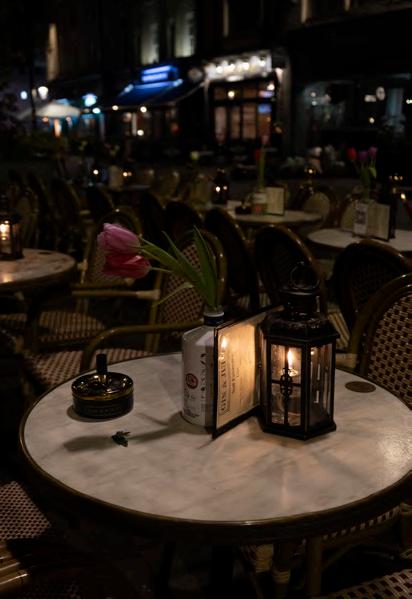
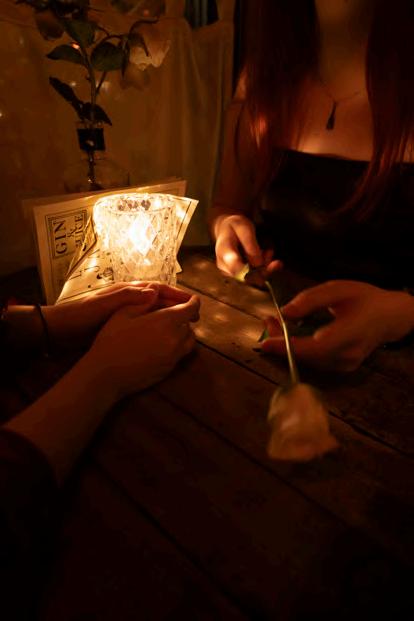
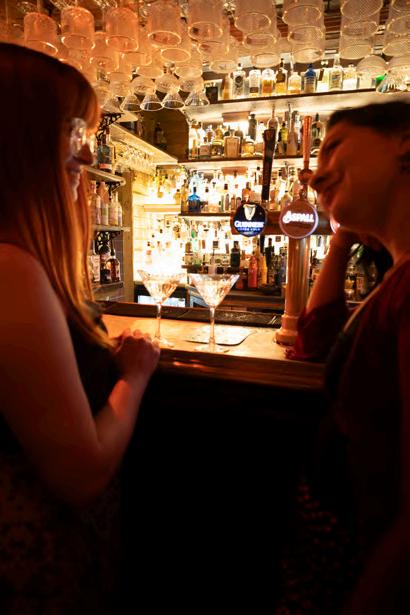

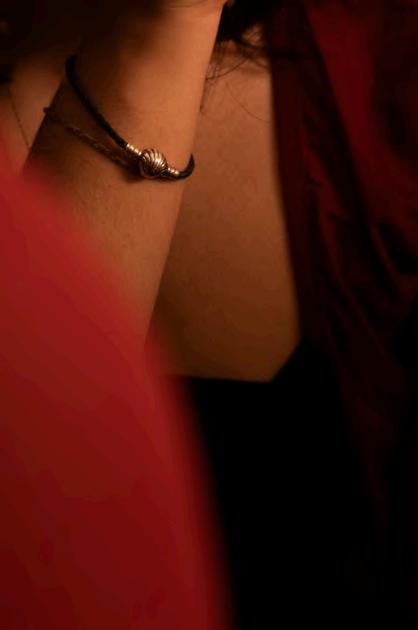
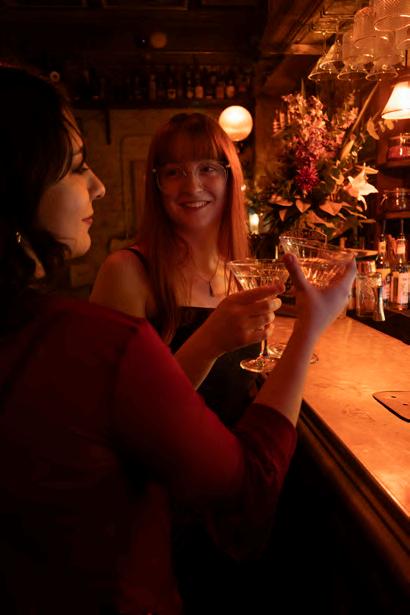


When I was younger, I had a peculiar obsession with The Muppets. This fascination ran deep, going to the cinema to watch the 2011 film five times (my poor nan, who accompanied me). I’m unsure if it’s down to the time of year when we spend the majority of our evenings cuddled up with loved ones, but no film feels quite like home like The Muppet Christmas Carol.
I truly believe this is one of the most amazing Christmas films of all time. I hate to sound as though I’m exaggerating, but this movie is close to perfect. Even scholars have said it’s one of the most accurate renditions of A Christmas Carol. Muppets aside, Michael Caine plays the character of Ebenezer Scrooge so well that you almost forget how hilariously fantastical the entire thing is.
Although filled with brilliant jokes and the most beautiful of scenes, the film’s soundtrack is no doubt its best part. Songs like Marley and Marley get stuck in your head the entire season, reminding you of the first time you watched it as a child. Even just the overture sends a shiver down my tinsel-wrapped spine, reminding me of my favourite time of the year and childhood that set me up to love it so much.
words by: Tegan Davies
My friends would consider me quite the sceptic, so it’s no surprise that I’m not a fan of the soppiness of rom-coms. Besides the odd wholesome movie, I don’t make a habit of watching stories purely about how two people fall in love, despite their obstacles. Put frankly, they feel disingenuous and too naïve. That said, Makoto Shinkai’s Your Name really got under my skin. It touched some part of me, deep in the void of pessimism, that still hoped that soulmates might actually exist. The film itself takes us through the moments when Mitsuha Miyamizu and Taki Tachibana swap bodies. At first, both believe they’re dreaming, only to find that they had been connected all along thanks to the red ribbon Miyamizu gave him years ago. I won’t give spoilers, but the idea that two people are linked together so much so that

Communication is key: the universal rule of thumb for healthy, functional relationships - but is it truly the be-all and end-all when it comes to love on screen? Throughout my teens and going into my twenties, I have remained closely familiar with Sally Rooney’s Normal People. Each year, when the winter months grow bitterly cold, I tend to find myself huddled up with my laptop, poring over the intricacies of Connell and Marianne’s devastating love story. As a younger, naïve individual, I longed for a relationship like theirs - one that appeared to transcend ‘normal’ boundaries. Connell and Marianne’s inevitable rediscovery of their love for one another spans across numerous years, countries, and relationships with others. I would have once described their predicament as ‘right person, wrong time’, or something adjacent to soulmates. Due to the sheer amount of personal and shared obstacles they overcome during their romance, it’s only natural to look upon the couple with admiration and root for their success. However, alongside the development and experience of my own relationships, it has become all too clear that the pair’s intermittent rekindling mirrors their ultimate fate: to lose each other. While there is an overwhelming amount of love shared between Connell and Marianne, the only guaranteed feature in their tale is loss. While it’s not wrong nor unusual to look upon Connell and Marianne’s relationship through rose-coloured glasses, the narrative certainly poses questions about how well-matched the lovers truly are. Is their harrowing separation in the finale simply one more hurdle, or does the basis of secrecy and shame on which their relationship was initially formed reflect how their differences will forever be too drastic?

Have you ever had a song take you on a trip down memory lane? Music is more than just something to listen to; it can act like a time capsule holding onto our special moments and emotions, even the ones we thought we had forgotten.
I’ve been working on a Spotify throwback playlist lately, and every recommended song I recognise is another wave of nostalgia! Tracks like ‘Down’ by Jay Sean and ‘Promise This’ by Cheryl remind me that I still remember the lyrics after almost a decade! Just thinking about them takes me back to the early 2010s, singing along or swinging my legs to the beat in the car’s backseat listening to Real Radio (before it got rebranded into Heart).
Also, listening to Skrillex’s 2010 EP, ‘Scary Monsters and Nice Sprites,’ brings me back to my old bedroom, painted bright purple with giant butterfly wall stickers. There’s one track that stands out for me– his remix of ‘Cinema’ by Benny Benassi. I remember it being the very first song I listened to with headphones, and wow, the bass was surreal. That moment transformed how I heard music from then on!
The songs we love and listen to can help shape who we are, reminding us of where we’ve been and how we’ve grown. They have almost a magical ability, so the next time you hear a familiar tune, take a moment to reflect on all the memories and feelings it brings back.
words by: Alanah Blayney
As someone who makes a playlist for every month of the year, I am a very nostalgic listener - and one song I always come back to is ‘Unwritten’ by Natasha Bedingfield.
It’s been played on countless childhood birthday parties and it was constantly on the radio in the mid to late 2000s. I ‘re-discovered’ it back in 2021 in the middle of A-Levels, and I resonated with it in a way I hadn’t before. It was a feeling of pending freedom and escape, and that my future really was laid out before me just waiting for me to go and discover it. So when I was handed the AUX in my Dad’s car, it was queued up and we sang it together, a moment of togetherness I often look back on. Obviously, it has been played in most subsequent car journeys.
It took on even more meaning after a mid-january exams cinema trip with my best friend. It was the main song of the film and we left the cinema laughing and singing it. It was the light in an incredibly stressful time for both of us. It came on in the club a few months later and we locked eyes, pointed at each other and danced together, screaming the lyrics alongside the rest of the dance floor. That feeling of freedom I felt all those years ago came surging back, with our hands high and jumping as high as we could - freedom in excess.
words by: Michelle Williams design by: Harriet Ulett illustration by: Olivia Nilsen
Grassroot venues are vital in upholding the music scene all across the UK. Without them, you probably wouldn’t be listening to your current favourites. Clwb Ifor Bach, Fuel Rock Club, The Globe, Porters, Tramshed, and recently shut down, The Moon, are just several of the independent, grassroot venues that Cardiff has to offer. These venues provide local artists with an opportunity for exposure, as well as bolster Cardiff’s reputation as a music city.
For music lovers, especially students, the best part about these venues is the affordable access to new local talent. These ticket prices are kept low, creating an inclusive local music scene with greater accessibility for the public. Artistic talent is greatly prioritisedwhich means that it is so important we support these venues so they can continue to serve this role.
As well as its affordability, local grassroot venues provide a way of exploring upcoming artists and bands. I’ve discovered several of my favourite local bands through grassroot venues like Fuel Rock Club, such as Cremulation, Sodomized Cadaver and Priest Crippler. Personally, it seems that grassroot venues allow musicians to connect with their audiences on a close, and more authentic level as they can build their confidence through small performances and easily speak to fans after a show. After attending several of Cremulation’s shows at Fuel Rock Club and watching them grow from 3 monthly Spotify listeners to 1000, they gave me a shoutout on the back of their debut CD for supporting their shows from the beginning - it really does pay off to support local!
There have been many musicians who began in grassroot venues and now have much greater exposure. For example, Fontaines D.C. played at The Moon in 2018, and are set to play in Cardiff Castle in July. Coldplay played at Clwb Ifor Bach in 2000 and now their arena tours sell out within minutes! This means that independent venues are so important to connect our most loved artists to the music industry. They provide a gateway to larger opportunities by enabling a place for artists to build a fanbase, refine their stage presence, and meet people in the industry.
Whilst these places give artists a platform to grow, they also connect us to local businesses.For example, several times a year Hell on Earth hosts an Alt & Goth market at Fuel RockClub, which features countless stalls from all different independent businesses selling their goods - suggesting that these venues connect us to a range of local talent, not just music!
Unfortunately, on average, at least two music venues close every week in the UK. Despite contributing over £500 million to the economy every year, grassroot venues are significantly underfunded in comparison to other areas of culture. Cardiff Council announced funding up to £10000 for its local venues in September, and the Welsh Government offered £718000 across 17 grassroot venues. Yet barely two months after this announcement, The Moon, one of Cardiff’s beloved independent venues, announced its closure. Ironically, Cardiff Music City festival was held a month prior, a 3-week long festival showcasing high-profile shows across the city. Although opinions may differ on this, one thing remains clear: it is crucial for us, as the public, to support grassroot venues to maintain our connections to local music so we don’t have to say goodbye to any more venues.
As a student who is a part of several different music societies at Cardiff University (GRIMSoc, Live Music Society, and Alternative Music Society), these local venues, particularly the ones on Womanby Street, offer a place for me to connect with people who share the same music taste as me. I’m able to attend local shows with those I’ve met through societies and connect myself to the music scene confidently - rather than trying to do so alone. The small music venues that Cardiff has to offer, have become like a secondhome to these societies and allow music-loving students like myself, to explore the musicscene easily and enjoyably.
If you haven’t already been to one of the grassroot venues in Cardiff, then what are you waiting for? Each venue offers their own variety of genres, whether it is indie, metal, folk or pop. All it takes is looking through their website and doing some research into the upcoming shows, or just go spontaneously - it’s definitely affordable to do so!
words by: Iylah Routley design by: Eleri Watts

Globally shaking the population, whether musically inclined or not, Oasis’ reunion tour was not one we counted on in the next decade: it seemed about as likely as the Beatles returning. With tickets for the event selling out in less than an hour, it remains certain that the duo have truly devoted fans. Not only is it undeniable that they have crazy talent, but also knowing their backstory justifies the fame entirely. Beginning at the bottom with raw talent, the brother’s story of rags to riches is what credits them with such praise and a faithful fandom. Performing first as a three piece, without Noel and his guitar, Oasis played their first gig at the Boardwalk Club in Manchester. It wasn’t until 1992 that Noel joined the band and the brothers made their mark on locations further than the North. The two young boys radiated with talent which was too fervent to ignore – they did it on their own.
Some have achieved similar levels of success, often thanks to a streak of nepotism. ‘It’s not what you know, it’s who you know’ has a whole new truth in the world of musical fame. I’m sure you can name at least five celebs off of the top of your head that have made it into music. Two of the most memorable: Willow and Jaden Smith, formally known as Will Smith’s children. Embarking on her musical career at age 10, Willow’s single ‘Whip My Hair’ was released. The question remains, can pre-pubescents really write, record, and release a hit with full credibility? I will leave that one up to you. Undoubtedly, her father’s cinematic stardom propelled her into a world of notoriety which also had room for her brother. Jaden Smith is a famous American rapper with three studio albums and mixtapes. Originally brought into the limelight whilst sharing the screen with his father on ‘The Pursuit of Happiness’, Jaden has since become a musical icon.
Diverting our interest back to those without pre-established fame, TV talent shows capitalise on those who come from nothing. Taking to the stage with a microphone and a dream (cliché, I know), countless singers have since made their own name from shows such as XFactor and Britain’s Got Talent. Harry Styles – sound familiar? The former fifth of One Direction found his feet after the boyband grew to global fame under Simon Cowell’s management. Prior to the show, Styles worked at a bakery. Serving then and, uh, serving now (If you get it, you get it), our humble Harry has taken the hearts of many. He grew from nothing, with a lucky TV break giving him the recognition he deserves.
Within the same realm as TV talent shows, social media is also a way in which people gain exposure. Nepotism has become prevalent in the world of influencers speeding their way into the musical industry. Branding themselves as musicians, weeks after posting a Stanley Cup campaign, I fear that autotune may be their sav ing grace. KSI, Wes Nelson, and Addison Rae, to name a few, have recently surfaced on Spotify. Taking it to the next stage (pardon the pun), some of these individuals have since toured and made debut appearances at festivals, including Reading and Leeds. It goes without saying that certain releases gain attention, with Rae’ single ‘Diet Pepsi’ peaking at number 54 54 on the Billboard Hot 100. Also being compared to the likes of Britta ny Spears, her voice has a unique Y2K style that is adored by fans. However, it is without question that her face carries the fame and her pre-established TikTok persona pushed musical success.
Known as ‘nepobabies’, countless celebrities have emerged in the music industry over the past decade. It is down to us to decide who and what we like to listen to, however, it is certain that our judgement can be swayed after finding out if recognition is deserved or unmerited
words by: Bo Burt design by: Eleri Watts






















Holden Caulfield. The infamous protagonist of J. D. Salinger’s most popular novel – Catcher in the Rye. The story details Holden’s life, describing a single night after being expelled from school. Even with its simple plot, this character and his internal reflections have stuck with society since the novel’s publication, staying with me since I read it at 15 and resonating with adolescents across the globe.
The connection between our stage of life and Holden’s is highly comparable. He is stuck between the liminal space of childhood and adulthood, without any clear sign of where to go next. His conflicts about growing up show the true struggle of facing the necessity of our next stages in life. As a first-year student, I deeply understand the scariness of adulthood.
Historically, people who relate to Holden haven’t necessarily been the best of people…as some may know, the man who assassinated John Lennon truly believed he was Holden Caulfield, even going as far as to sign documents using that name. Although I relate to the character, I promise my murderous tendencies are more comparable to a care bear. Still, I never really saw Holden as a murderer, more so a lost teenager who’s struggling to find his way in the world and is doing anything he can to continue through the circle of life.
Holden’s vulnerability echoes off the page, his complexities having different interpretations to a diverse set of audiences, but Holden has always been a place of comfort for me. This book is my all-time favourite since my first read, as it relies so heavily on its protagonist’s thoughts and feelings. As a character-based story, you learn everything Holden wants you to know about his life – the highs and lows. You get to know Holden and begin caring for him as though he’s a friend. I re-read it recently, now seeing him from a different light and finding myself relating to him more than I ever did in the past. University is a scary and lonely step, aspects that Holden understands incredibly well, detailing his constant mood swings of having the time of his life to suddenly feeling so low. I believe this is a universal experience, the sudden change of university truly does affect everyone so differently – but I find that everyone can see themselves within Holden Caulfield.
words by: Meagan Griffiths
A Place For Us by Fatima Farheen Mirza focuses on a South Asian Muslim girl, Hadia, who struggles with cultural and generational differences while living in a Western country. Hadia struggles with her identity and tries to distinguish herself from her family by becoming an independent, working woman, whom her father disapproves of, going against her culture. The novel showcases themes of Islamophobia and questions about identity when growing up with two cultures. Hadia navigates the tension between tradition and modernity, and these tensions allowed me to self-reflect on my goals and future where it can be challenging to juggle so many expectations from family and society.
Wanting to please family and maintain traditions is a key element in the novel. As the oldest daughter, she struggles with her family’s validation and the fear of disappointing them. She pursues her own dreams to have a loving marriage with Tariq, instead of an arranged one, and her dream to become a doctor - typically an occupation reserved for boys in her family. In many South Asian cultures, it’s common for daughters to have an arranged marriage and become housewives serving their children and husbands. This is what is expected of Hadia, but she breaks generational norms and finds her own spouse. Respecting parents and cultural traditions is difficult to navigate as a South Asian daughter when family is a core value in their lives.
Hadia’s story really connects with my experience as a South Asian Muslim girl growing up in the UK. I’ve had to learn how to separate my own desires from my family’s desires and to become my own person. Hadia’s journey with her family, forming her own identity without family intervention, resonates with me deeply. Being a humanities student goes against the traditional career path that South Asian parents expect. It can feel strange to go against cultural norms, along with the constant pressure to be successful. Many second-generation immigrants can relate and connect to fictional stories about identity, belonging, and growing up with two different cultures. You’re first introduced to the world by your family, and so it can be hard for young South Asians to find their place in the world, especially in a world they are not familiar with and a world that sometimes feels unwelcoming.In Hadia’s struggles and triumphs, I find echoes of my own life, creating a powerful connection to her character and her search for identity.
words by: Alicia Tariq design by:
Katie Storrie

In a world that often feels overwhelming, physical book spaces like libraries, bookshops, and coffee shops are natural places for literature lovers and writers to call home. Is there anything cosier than the quiet hum of a library or the comforting scent of a café’s hot drinks and baked treats?
Book spaces can be more than quiet sanctuaries for reading—they can also bring like-minded people together! For example, libraries often host book clubs and literary events, encouraging a sense of community and a chance to meet new people. Whether it’s a quiet library corner, a cosy bookstore nook, or the relaxed ambience of a coffee shop, these spaces offer an invitation to connect and wind down by simply existing.
For me, the library in my hometown used to be where I would privately tutor students because it was easily accessible and a comforting space that would ease their stress. However, my current favourite book space around Cardiff University is Hoffi Coffi. I enjoy it because it’s just a fiveminute walk from my location and the interior layout, staff, and menu create a calm and friendly atmosphere. Reading a journal article assigned for coursework with a tasty drink or treat by your side is undoubtedly a positive motivator.
As our lives become more hectic, these book spaces remind us to pause and connect with stories, others, and ourselves. These spaces aren’t just places for books; they’re places to create community, facilitate concentration, and spark new ideas.
words by: Alanah Blayney
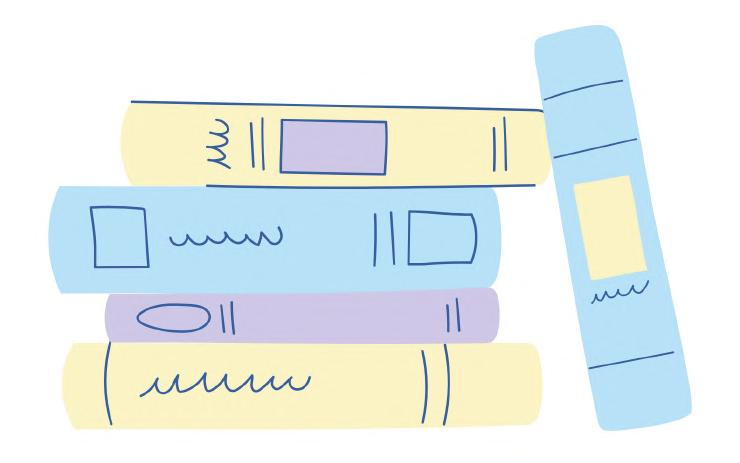


As someone who used to sit on the playground with my nose in a book rather than play with the other children at school, I’ve always found the world of books to be one I prefer. Now, it is deemed less acceptable for twenty-year-old me to be so blatantly anti-social.
When I first came to Cardiff, the city seemed to present me with all these brand-new nooks and crannies where I could see other people just like me, hiding away from the world yet sitting in plain sight. Over the past year and a half, I’ve found myself returning to the same places, the ones that always welcome a seat for one with no judgement. The ones full of silent friends, catching glances at your cover page, a smile or a comment about how much they loved it, too. In these places – the cafe’s tucked away in the arcades, Waterstones, or even a park bench –you find unexpected friends, spark unexpected conversations, and meet those people who also used to sit on the playground alone.
Places such as these are an essential part of bringing together groups of people who have so much to say but no one to say it to – who have experienced hundreds of different lives yet are forced to keep them quiet. The discussion and connection between two readers is magical and we should replicate it more often, through these spaces and sanctuaries, to become one group of people who would never have found each other ordinarily.
words by: Lily Portch design by: Ola Rzeszut
If you’re familiar with cult-classic The Devil Wears Prada, then you’re bound to recognise Miranda Priestly’s famous monologue about a particular cerulean sweater. In the scene, fashion novice Andy casually refers to the garments and accessories they fuss over for a photoshoot as “stuff”, alluding to a personal detachment to the wider fashion industry itself. Miranda seems somewhat displeased with this comment, to say the least. Pointing out Andy’s very own blue sweater:
“... that blue represents millions of dollars of countless jobs, and it’s sort of comical how you think that you’ve made a choice that exempts you from the fashion industry when, in fact, you’re wearing a sweater that was selected for you by the people in this room, from a pile of ‘stuff’”.
Cold as Miranda may have been in her delivery, she made a valid point; what we wear is inextricably connected to the world around us and the decisions of other people, no matter how much autonomy we believe we have when it comes to choosing how we dress. Our connection between what we choose to wear, and how it informs our spending, is inherently political.
Our clothes, down to their threads and where they’re crafted from, tell us so much about the innate workings of our material climate. They’re a political time capsule so to speak. One surprising sign of the times is the length of our skirts. The Hemline Index theory stemmed from American economist George Taylor in 1926, as it was observed that skirt lengths seemed to rise during economic booms and get longer during recession. The rise of the Roaring Twenties in the US was regarded as a period of economic prosperity and rich cultural revolution. As the glamorous flapper fashions of the decade emerged, women were adorned with cloche hats, pearl necklaces and rouge lips. Of course, the stars of the whole ensemble were beaded fringed dresses with drop waists, and hemlines that reached just below the knee. These dresses were daringly short and allowed women to show off their luxurious silk tights. In comparison, it has been suggested that the popular skirts of the 1930s aimed to cover up bare legs, as silk tights became widely unaffordable. The Wall Street stock market crash of 1929 saw the lavish lifestyles of the last decade plummeting along with the economy, all the while hemlines seemingly fell back down to cover the calves
In 2017, an article published by Vogue suggested that the trend of zig-zagged hemlines modelled across the SS17 season reflected a period of political turmoil and economic instability. Fashion houses including Louis Vuitton, Chloé and Rodarte showcased hemlines that were ruched and ruffled, the lengths of which varied from model to model. The year prior had seen global economies shaken by the likes of Brexit and Trump’s appointment as president, though what’s to say that this had an impact on the creative process of so many designers? In essence, all this comes down to observation as opposed to direct cause and effect, which has prompted researchers to critique the theory.
Does the hemline index still hold relevance today? Our world feels fast-paced, constantly ushered forward online spaces. The demanding nature of social media propels the rise of microtrends, which see short-lived cycles of fashion come and go quicker than ever before. Perpetuated by a meteoric rise in fast fashion, clothing styles, including those of skirts, are produced and replaced constantly. On the other hand, second-hand shopping is on a steady rise too. We’re encouraged to lengthen the lifespan of clothing, both current and vintage. There is a craving to slow things down, particularly the excessive desire for more materiality in our lives. What’s more, with increasing exposure of the corrupt systems of production, which are sadly steeped in exploitation of both people and planet, there is a growing awareness as to the ethics we support when we spend our money, or perhaps decide not to. The upcycling of a pre-owned maxi skirt into a mini may be considered a means of updating a wardrobe against a cost of living crisis, a conscious act of revolution against our fashion systems as they stand, or simply a display of individual self-expression.
This begs the question, can hemlines still be generalised and observed in a way that defines an entire moment in time? While the conversation is evolving, the notion that fashion and the economy are in fact very closely connected remains relevant as ever.
words by: Thandi Carklin design by: Ola Rzeszut
I’ll admit it, I’ve never been on a date, but that doesn’t stop me from dreaming about the perfect first-date outfit – a look that shows I’ve put in the effort while still staying true to myself. The main concept I would focus on is seasonal colour analysis, which creates a personalised colour palette that suits your features best—I highly recommend figuring out yours! I’m a ‘true winter’, meaning mine is made up of cool and highly contrasting colours. Based on my colour palette, for a first date, I’d probably wear a cobalt blue V-neck top since according to colour psychology, it’s associated with calmness, trust, and confidence. I’d pair that with sleek black leggings for a comfy look and throw on some layered silver necklaces and dangling earrings to add sparkle. Ultimately, in my opinion the best first-date outfit is one that reflects your personality and makes you feel confident and authentic!
words
by: Alanah Blayney
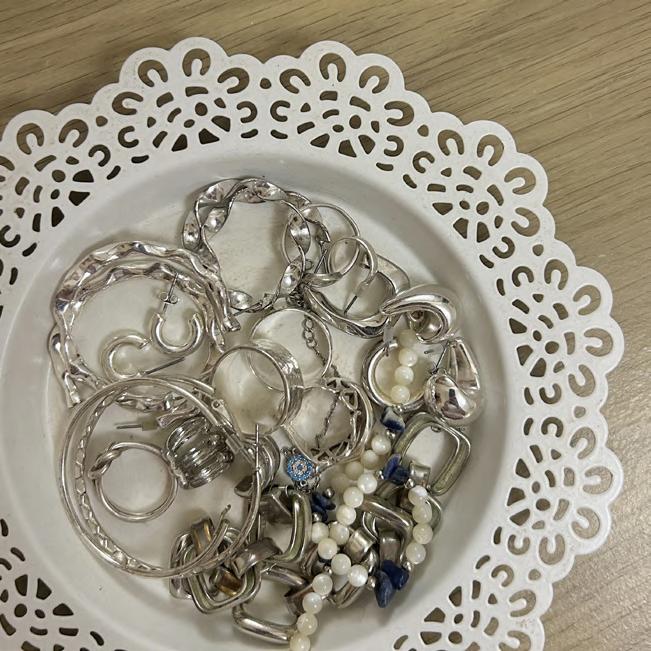
First dates are essential to find ‘the one’, and with that comes finding the perfect outfit. The search to find something that’s uniquely you, more impressive or an elevated version of your style. The pressure to please and perhaps even find love is all so thrilling.
When picking an outfit, location of the date is the most important aspect to consider, you don’t want to be arriving at the cinema in a fitted dress and heels. For example, my last first date was a shopping date. Requiring something subtle, no need to overdress but still wanting to show why I’m the one for him. A baggy jean that accentuates the right parts of my body paired with a black fitted cardigan; I wanted to look effortless. While also appearing nonchalant making him think; “Yeah, I’m into you, or whatever”. Additionally in my opinion, the best accessory is always confidence...and of course a cute shoulder bag!
words by: Ffion Brook
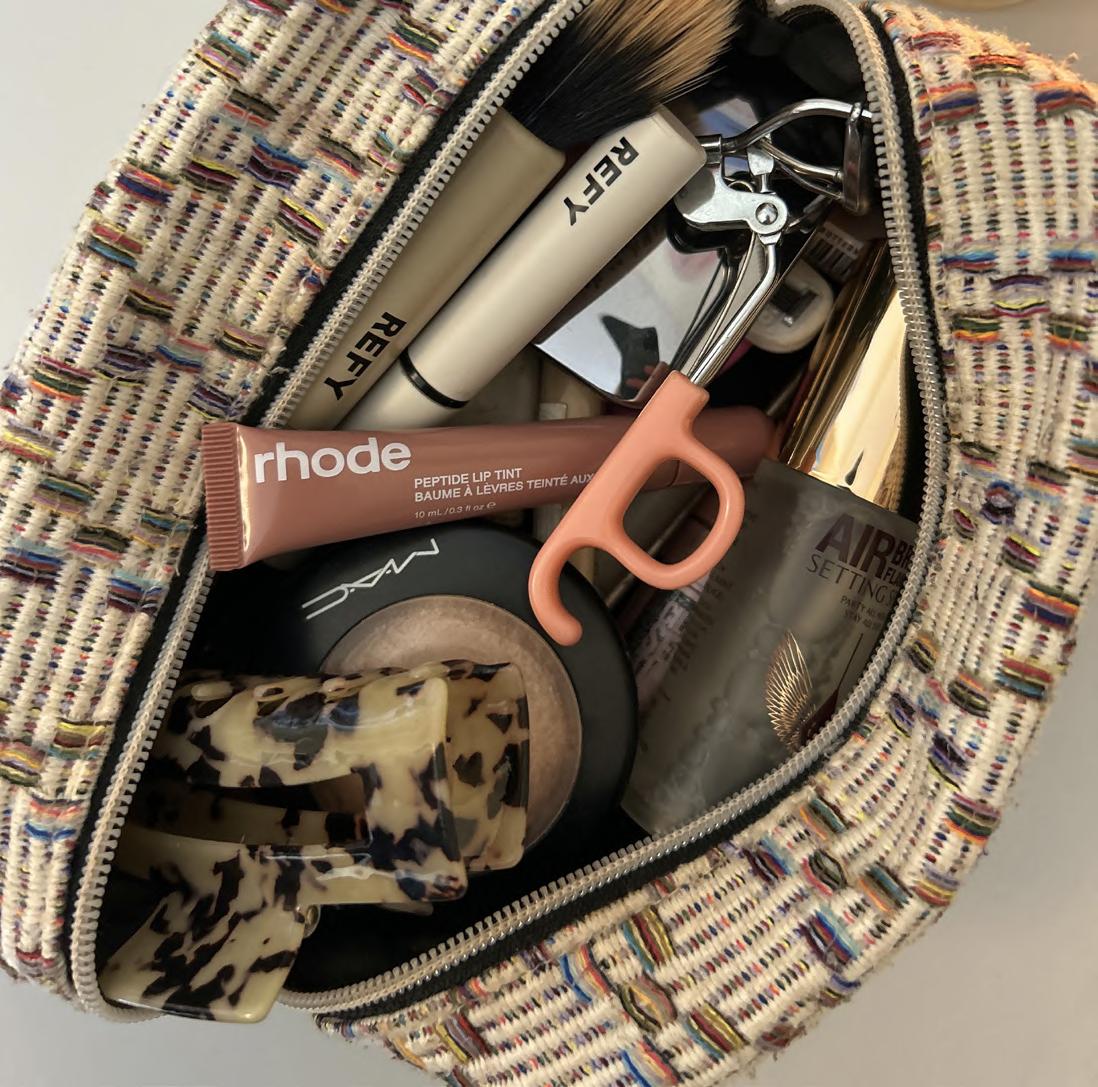

“Choosing something that’s authentically you will always make you feel the most confident.”

I recall standing in the mirror waiting for my friends’ approval on the current outfit, anticipating it joining the floordrobe with the rest of my clothes. Dressing for a first date can be hectic but for me my friends have always been there to get me through it.
Most important when finding the perfect outfit are the occasion, staying true to yourself, confidence and of course a smile! Keep it casual with jeans and a cosy jumper for late-night food or dress up with a fur coat and kitten heels for somewhere higher end. When deciding whether to keep it simple, authenticity will always be stylish. Choosing something that’s authentically you will always make you feel the most confident. For me, it’s jewellery and my signature perfume, chunky gold hoops, a statement necklace and layering floral and vanilla scents. Lastly, whip out that gorgeous smile to ease nerves while complimenting your look.
words
by: Keira Adu Gyamfi
My favourite first date outfit was a pastel dress paired with cat pompom earrings, matching pastel makeup, and blue and pink polka dot dolly heels. Topped off with a plait and all-in-all, I looked like I was at a school disco. It did cross my mind that this wasn’t the best choice for a first impression, but by then I was already at the bar and waiting to meet my date.
With my unique fashion sense, it’s hard to narrow down the perfect look for a first date, but this one nailed it. I like whimsical outfits and although it’s not what I go for most of the time, especially when I’d rather wear cargos, it means I can share a side of my personality that’s usually hidden. However, my date turned up in black joggers and a plain white t-shirt so it’s safe to say, there wasn’t a second.
words by: Megan Ingram-Jones design by: Harriet Ulett
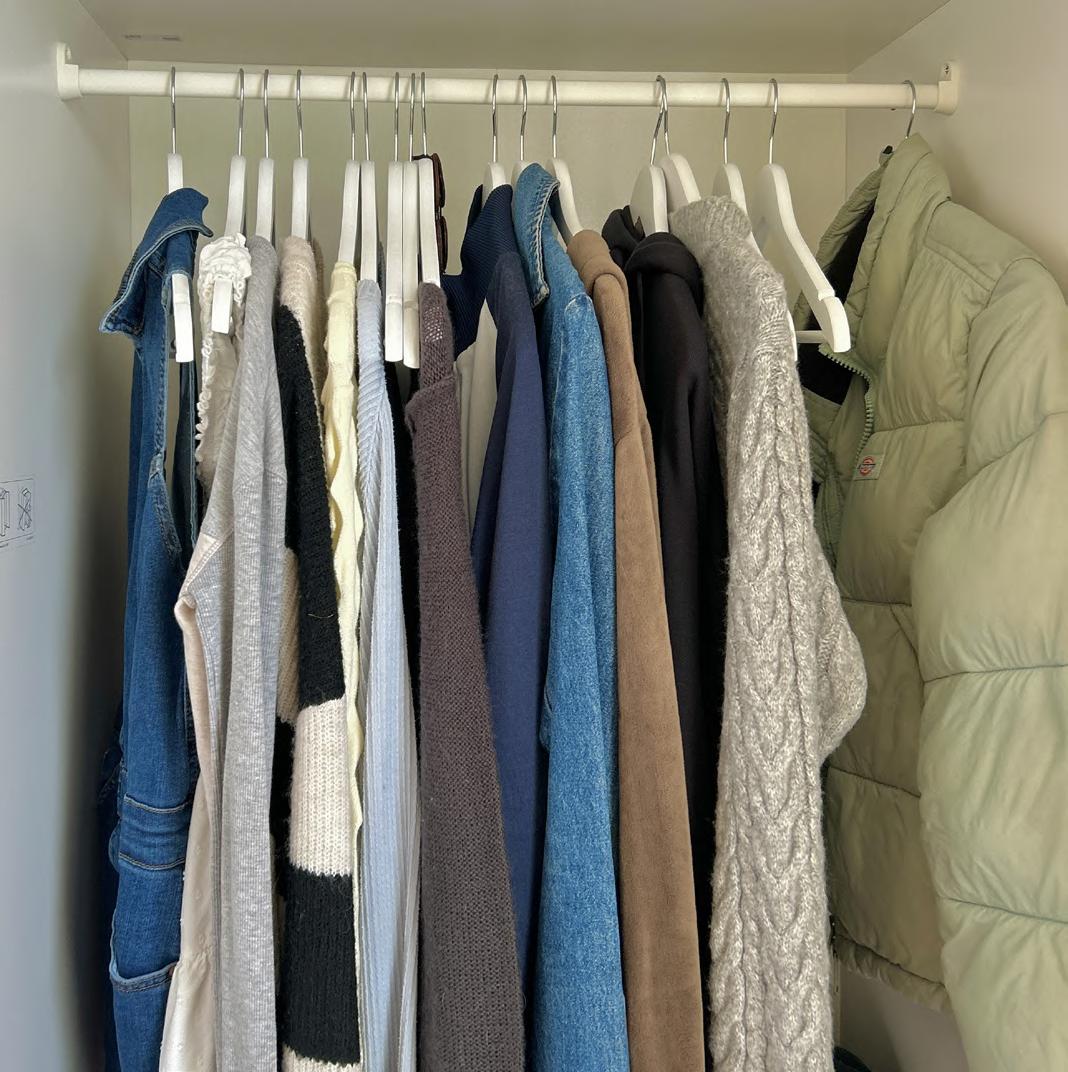

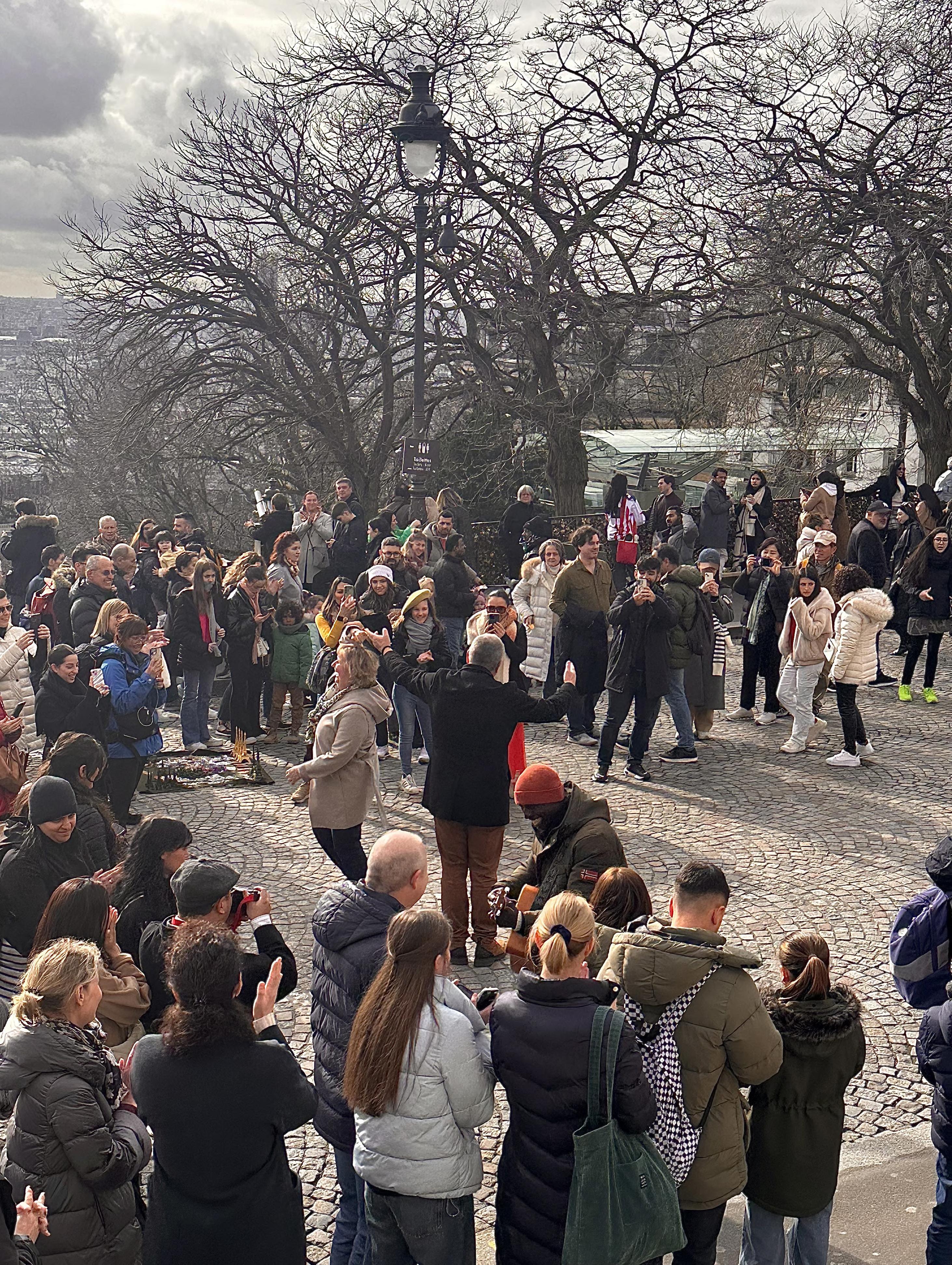

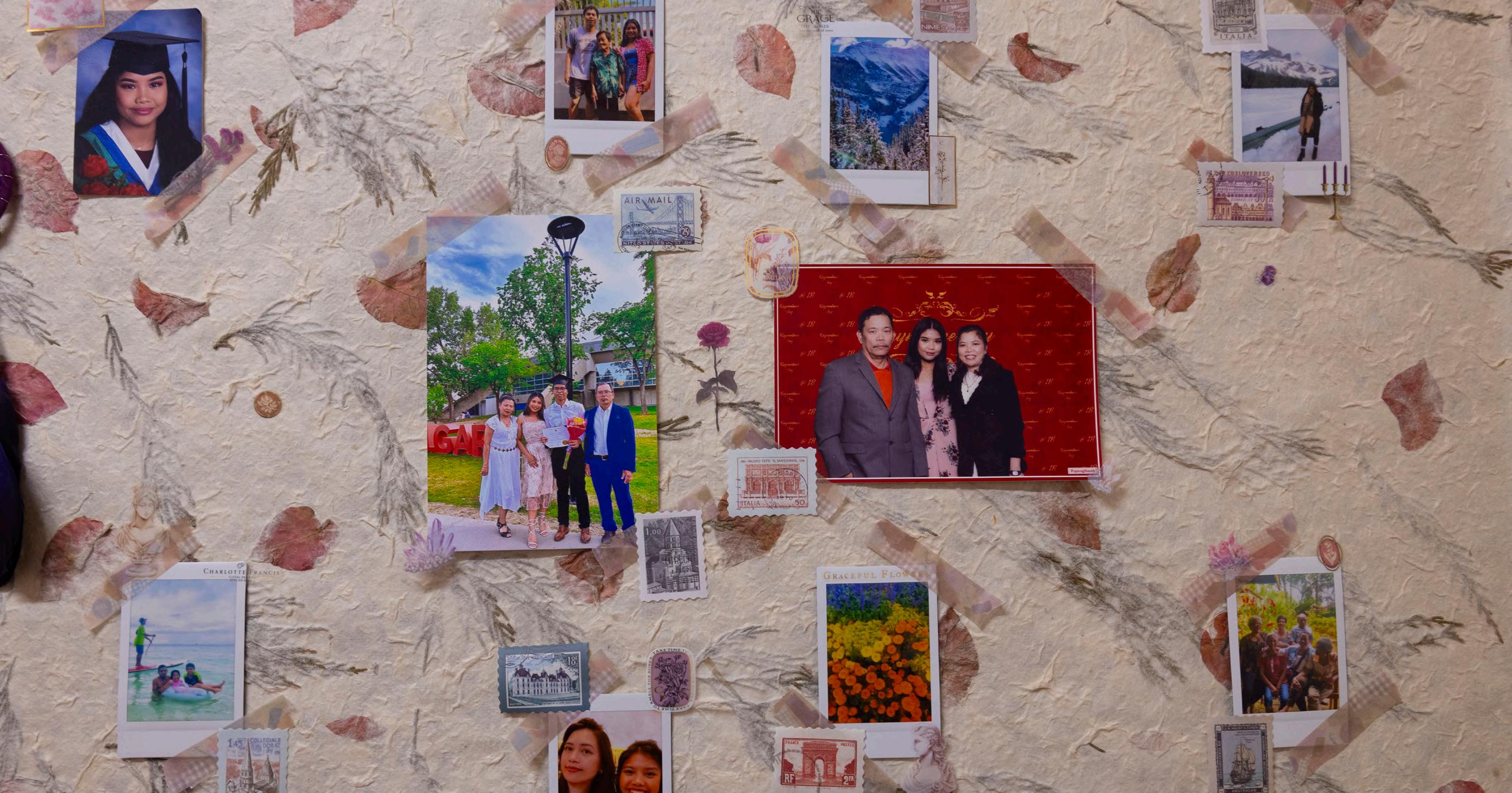
“my mum was mortified”
In 1993, my parents were living different lives as young twenty-somethings in opposite corners of the Philippines. My mum, Ofelia, was a struggling uni student in the bustling city of Pasig, Manila. My dad, Reggie, was a self-proclaimed rockstar –a guitarist/vocalist in his family’s band – travelling city-to-city from rural Quezon to make ends meet.
One day, my mum made an eight-hour journey to Quezon Province with nothing but the exact bus fare, the clothes on her back, and the hopes of meeting the “handsome band-boy” her best friend wouldn’t stop rambling about. The fiesta had already begun. My mum’s best friend was heart-eyed over my dad the whole time, and my mother... expressed no attraction towards him whatsoever. Instead, she took an interest in the drummer.
After failing to charm her during a horrific twoman step with the drummer, my dad decided to do something courageous. He got up on stage and dedicated some Bon Jovi song to Ofelia. My
mum was mortified, and her friend was seething with jealousy, and they were both too stunned to speak for the rest of the song.
The next day, my dad ‘accidentally’ missed the boat home to spend time with my mum and ask her for her number. She said yes. They scraped together their allowances to call each other and make cross-country visits despite living in poverty. But eventually, my mum called it off, thinking long distance wouldn’t work. Months later, unable to shake the feeling it wasn’t over, she broke the silence, asking him for help with an art project. He immediately said yes, boasting of his usefulness as he was a great artist (he was not).
Now, they’ve been married for twenty-nine years. Their love story, although messy and imperfect, taught me to embrace someone fully: their flaws, their troubles, and their past. And maybe, just maybe, to give an ex a second chance.
words by: Leigha Sanejo

After graduating from university in Southampton, my mum was faced with the dreaded question of what to do next. She was uncertain about career plans but wanted to travel, so she jetted off to Spain. She headed to Pamplona to teach English as a foreign language. She was young and spoke no Spanish but became friendly with a girl who was part of my dad’s cuadrilla (friendship group). He purposefully made a silly bet and lost it so he could take her on a date.
Two unlikely matched individuals, who at first didn’t speak the same language, brought together by fate. They partied, drank, and travelled Spain together, but time had run out. My mum wanted to move back to Northern Ireland and get a PGCE. She found her love for teaching in Spain, but she also found love for a man there, so they faced a problem. My dad decided it was his turn for an adventure and moved to Northern Ireland with her, despite having to leave his beloved Volkswagen Golf behind. He worked hard to get a well-paying job, and eventually they put a mortgage down on a house in a small town in County Down. Their love never wavered for one another during this transition of change. They had three girls and got married, which they joke was so my dad could get a good pension plan, and to this day still live in that house.
My sisters and I benefit from having a Spanish dad, but not just because we tan well. We travel there every summer, experiencing a rich culture of food, drink, festivals, and of course spending time with his side of the family. My dad likes to bring a slice of his culture back to Northern Ireland. He’ll host Spanish dinner nights for my mother’s parents so they can try tortillas, pimentos, chorizo, paella and arroz con leche. Their love has taught me to take chances and be spontaneous, because sometimes the most special things can come from it.
words by: Alaia Oscoz
“my sisters and I benefit from having a spanish dad, but not just because we tan well ...”
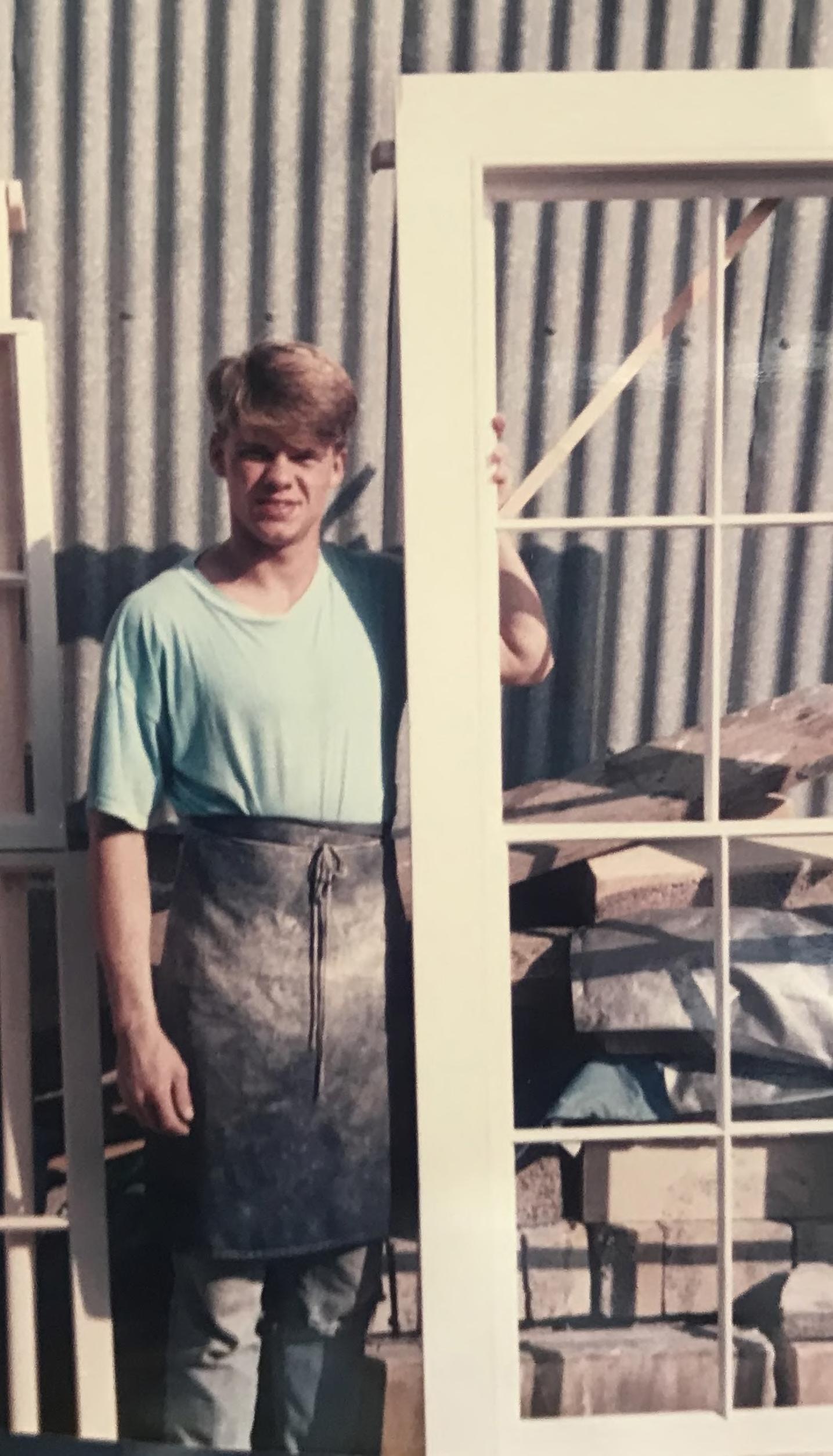
It began over monkey bars. For context, I moved around a lot as a child, and for two years, I foundA myself living in sunny Gibraltar. With Spain only being a two-minute walk away, it was inevitable that we were going to take plenty of holidays there. It was on one of these, when I was nine, I met another child who I presume was Spanish. I’d been attempting to swing across some wooden monkey bars on a beach. I was abysmal at it and probably still would be if he hadn’t come and joined me. We ended up taking turns, neither of us seemingly able to get across the third rung without falling into the sand below. After several failed attempts, he miraculously managed to get halfway through without bombing it. I applauded him. I remember the impressed expression he had, smiling when I congratulated him. He later returned the celebration after I managed something similar. Our communication and our appreciation were completely nonverbal. It was simply taking turns and clapping when the other did relatively well. I remember trying to speak to him in English and him trying to reply in Spanish, but neither of us was able to understand each other. It didn’t matter, though; we continued playing after.
The modern world moves quickly, and it almost feels like if you don’t move with it, you’re going to be left behind. Everything you could need is just a button away: food, experiences, even other people. It all comes so easy now, and so, in a way, we are encouraged to be lazy and we expect quick fixes to everything. But real people and forming relationships don’t have ‘quick fixes.’ If we don’t understand something immediately, it is not uncommon to have the tendency to abandon things entirely. I myself am guilty of having several unfinished endeavours within their first chapters. But how many relationships have we missed out on because we didn’t take the time to step back, slow down, or appreciate the little things? We don’t need to have deep, long-term connections with everyone. The childhood encounter was only over half an hour. But we should be able to take a few moments out of our day to truly try and understand someone, especially people outside our social circle, a task which sounds more difficult than it is. Sometimes, it is as simple as smiling at people as you pass them down the street. It’s about not taking the small moments for granted and appreciating small but genuine human connections.
It’s strange to look back and realise that we’d spent a good half an hour to an hour playing together despite neither of us knowing something as simple as each other’s names. In fact, I only learned his name when one of his parents called him over to leave. (A name which I’ve now forgotten.) It’s really interesting to reflect on this memory, knowing we were capable of understanding each other without the need to speak. Despite the short time we played together, I see it as a testament to the innocence of childhood. We built a small connection that didn’t require words.
This experience has allowed me to reflect on how we, as adults, neglect to engage in deeper relationships. We no longer give ourselves the time to build meaningful connections any more. When you compare two children, who don’t share the same language, who are able to find a common ground and enjoy each other’s company, to adults who do not take the time to get to know each other properly, even for a brief moment, it’s sad.
The Greek myth of Persephone and Hades describes how a few pomegranate seeds caused Persephone to be tied to the underworld for the rest of her life. Through these myths, we are able to look at the world and its ‘mysteries’ through a different lens. The Ancient Greeks used this story to explain the changing of the seasons, as well as create other interesting connotations.
The goddess Persephone is the daughter of Demeter and Zeus, wife of Hades, and queen of the underworld and spring. Her infamous myth portrays a narrative of captivity - Persephone’s descent into the underworld and her eating of pomegranate seeds could also be seen as a journey of transformation and resilience.
Persephone was a young and beautiful girl, who lived with her mother in a world where it was always summer. The sun shone warmly and sweetly, and nature was abundantly in bloom. One day, while out with friends, the ground underneath her feet split open and Hades, the God of the Underworld, appeared in a chariot. He took his chance and snatched Persephone and took her back into the earth with him. The ground closed back up again and a patch of flowers was left on the site of Persephone’s abduction.
Persephone’s mother, Demeter was grief-stricken and the height of her grief caused the earth to grow cold and nature shrivelled. The earth lacked sun and as a result, no food could grow, and a hunger plagued the people.
Meanwhile in the underworld, Persephone became less scared of Hades, and came to understand that he was lonely by himself, and longed to keep Persephone with him. Persephone grew to love Hades as well as her new status as the Queen of the underworld. Both her love for Hades and her love for being the Queen of the underworld gave Persephone reason to stay below ground, despite missing her mother and the brightness of the world above. Persephone believed that she had a calling and a reason to be under the ground that she wasn’t aware of yet. Persephone knew that she was still trapped in the underground against her will, and that if she ate or drank anything whilst there, she would have to stay there forever. Hades begged her to have a single sip or a bite of food but she refused everytime.
Once Demeter finally learned where Persephone was, she insisted that she be returned to her. Hades reluctantly prepared his chariot to take Persephone back, but right before they left, he offered her one last thing to eat - a ripe, succulent, blood red pomegranate. She looked him directly in the eye, took six seeds, and ate them.
Hades and Persephone travelled back above ground through a crack in the earth, and Persephone threw herself back into her mother’s arms as they both rejoiced at their reunion. Persephone’s return to the world meant that the earth grew rich again with flowers and greenery, and the sun shone brighter than before.
Persephone’s decision, however, to consume the six pomegranate seeds meant that for six months of each year, she must return to the underworld with Hades. This ancient story gives a reasoning and backstory to seasons. Through this myth, we as a society can believe that for the six months when Persephone is in the underworld, winter is prevalent in the world, and her return to her mother every six months marks the beginning of spring, when the earth is allowed to bloom in its entirety.
Through these myths, we are able to look at the world and its ‘mysteries’ through a different lens. While we in modern times understand the scientific reasoning behind the seasonal changes, stories such as the abduction of Persephone have impacted how we view the world and how we find reasoning with what happens around us.
An array of symbolism is prevalent in this myth, with themes and teachings about the cyclical nature of life and death, fertility and abundance, and the indissolubility of marriage coming through this myth.
words by: Bhamini Khandige design by: Eleri Watts
Living at university means I am constantly trying to replicate family recipes to stay connected to my Syrian culture. My favourite dish to make to remind me of my Syrian heritage is Arayes: meat-filled pitta pockets that are easy to make and utterly delicious. Still, after all these years of making the dish, I will call my “Baba” to make sure I am doing the right steps, just to stay close to my family.
Ingredients:
Minced meat (Lamb or Beef not Pork!)
½ x Onion
1 x pack of pitta bread
A glug of olive oil
1/2 tsp Coriander
1/4 tsp Cumin
1/4 tsp Allspice
1/2 tsp Paprika
1/4 tsp Cayenne
Salt & Pepper to taste
Yogurt/ tzatziki dip to serve
Method:
In a bowl, add your spices and mince. Grate your onion and add it into the bowl. Use your hands to combine the meat, spices and onion together. Cut your pittas in half widthways and carefully open so they become pockets.
Stuff the meat inside the pockets and flatten them. Take care to distribute the meat evenly throughout the bread to a 1-2cm thickness.
Drizzle the olive oil in the pan on medium high and pan fry the pockets on both sides for a total of 4-5 minutes - 2 minutes on each side
Remove from the heat and serve with the yogurt/ tzatziki.
Though somewhat simple, the making of Lemon Shortbread instantly connects me with my mom, baking together in the kitchen, playing board games and eating the whole plate. It is a warm hug when feeling homesick. Being at university can be hard, especially when you feel so happy with the people you leave behind. Therefore, it is important to have small comforts to keep you going, and this is one of mine. A warm, melt in the mouth biscuit.
(Makes 10)
115g Softened Unsalted butter
55g Caster Sugar
115g Plain Flour
55g Cornflour
Pinch of Salt
1 Lemon
Method:
Line some baking trays with baking paper. Add the sugar and butter into a large bowl and cream together until light and fluffy.
Sift in flour, cornflour, and salt and mix until combined. Tip mixture out onto a floured surface and knead into a soft dough.
Zest the lemon and knead it in.
Roll out dough between two pieces of baking paper to 1cm thickness.
Prick all over with a fork and cut out biscuits.
Chill in the fridge for 30 minutes and preheat the oven to 170 degrees.
Bake for 20 minutes.
Dust with sugar after baking and enjoy.
words by: Lily Portch
A baked good that I hold dear is Filipino Spanish Bread: fluffy rolls with a buttery filling that I loved spreading Nutella on as a kid. I will always cherish the love this bread has brought me throughout my life, even if my siblings do not fight over them anymore. For filling:
For dough:
375g flour
1 ½ tsp yeast
50g sugar
1 tsp salt
180ml lukewarm milk
3 tbsp melted butter
1 egg
60g butter
50g breadcrumbs
2 tsp flour
30ml milk
110g sugar
1/8 tsp salt
1 tbsp butter to brush
Method:
In a bowl, mix the dough’s ‘dry’ ingredients, then slowly incorporate the ‘wet’ ingredients, to form a sticky dough.
Knead on a greased surface until smooth and elastic.
Place in a greased bowl. Cover and let it double in size.
Meanwhile, prepare the filling: melt the butter, and add the remaining ingredients. Cook over a lowmedium heat until it is a paste-like texture.

Divide and roll the risen dough into 16 triangles. Brush the middle with butter, then spread the filling, leaving 1cm around the edges.
Roll from the wider ends toward the smaller, brush with milk and roll in breadcrumbs.
Cover and leave until doubled in size
.Bake at 150°C for 20 minutes, and cool.
words by: Leigha Sanejo
design by: Eleri Watts
Mae creu ffrindiau newydd yn gallu bod yn scary iawn, a rwy n siwr bod llawer iawn o bobl yn cytuno gyda fi wrth ddweud hynny. Just cyn dechraur flwyddyn gyntaf yn y brifysgol, rwyn cofio poeni mod i ddim yn mynd i greu ffrindiau yn wythnos freshers o gwbl, a wedyn fydda in friendless am weddill fy amser yng Nghaerdydd. Ond does dim un ffordd yn unig o greu cysylltiadau newydd, a maer newid o fod yn gydfyfyrwyr i fod yn ffrindiau yn gallu digwydd mewn gymaint o ffyrdd gwahanol.
Mi wnes i gwrdd â rhai o fy ffrindiau agosaf yn y llety myfyrwyr ym mlwyddyn un. Daethon ni i gyd i Gaerdydd yn teimlor un peth; yn unig, yn bryderus, yn methu adre, ond hefyd llawn bwrlwm a chyffro. Roeddem ni i gyd yn gyd-fyfyrwyr yn yr un cwch, ac roedd byw trwyr profiad or tymor cyntaf yn y brifysgol gydan gilydd, yn yr un gofod bach, wedi dod â ni at ein gilydd fel ffrindiau. Rwyn teimlon lwcus mod i wedi dod yn ffrindiau mor agos gyda flatmates fi, oherwydd nid yw pawb o reidrwydd yn cael yr un profiad. Ond nid dymar unig ffordd i ddod yn ffrindiau gyda chyd-fyfyrwyr.
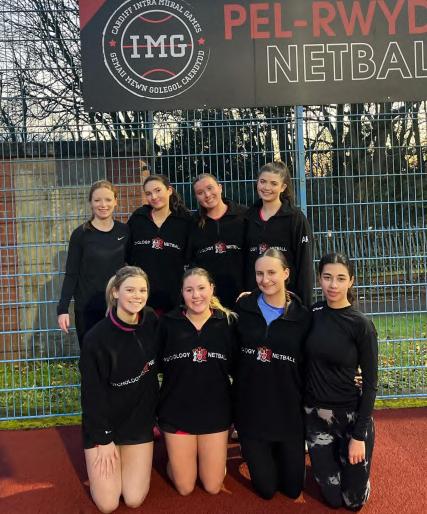
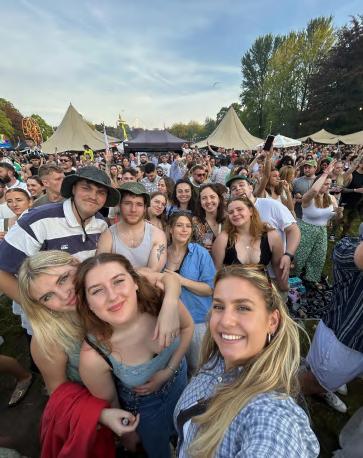
Un peth dwi wedi dysgu am fywyd yw bod ffrindiau yn gallu mynd a dod ar unrhyw adeg, a gall cyfleoedd i greu cysylltiadau newydd godi drwyr amser. Mae hyn yn wir am fy mhrofiad fel myfyriwr; nid y ffrindiau dych chin neud ar ddechraur flwyddyn gyntaf bydd o reidrwydd eich ffrindiau pan fyddech chin graddio. Mi wnes i gwrdd â rhai om ffrindiau gorau ym mlwyddyn dau a thri hefyd. Yn yr ail flwyddyn, rwyn cofio clicio gydag un merch oedd yn ciwio tu ôl i fi wrth y bar mewn clwb nos, a dyn nin ffrindiau da o hyd! Mi wnes i gwrdd â llawer iawn o bobl yn yr ail flwyddyn ar ôl imi ymuno gyda chymdeithas newydd a mynd i socials. Does dim angen bod yn fresher i ymuno gyda chymdeithasau: mae wastad cyfle ichi ymuno â grwpiau a chreu ffrindiau newydd!
Dwi hefyd yn dal i greu cysylltiadau newydd yn fy mlwyddyn olaf. Y tymor ddiwethaf, mi wnes i ddwy ffrind newydd yn fy ngrŵp seminar ar fy nghwrs gradd: fel maen digwydd, roedd hin byw yn y fflat uwchben fi yn y flwyddyn gyntaf, ond ym mlwyddyn tri oedd y tro cyntaf i ni gwrdd!
Rwyn siwr fod gan bawb, fel fi, eu straeon gwahanol o sut aethon nhw o fod yn gydfyfyrwyr i ffrindiau. Bydd wastad y posibilrwydd ichi greu ffrindiau newydd dros eich holl amser yn y brifysgol, felly byddwch yn agored i gyfleoedd o greu cysylltiadau newydd.
geiriau gan: Lili Evans
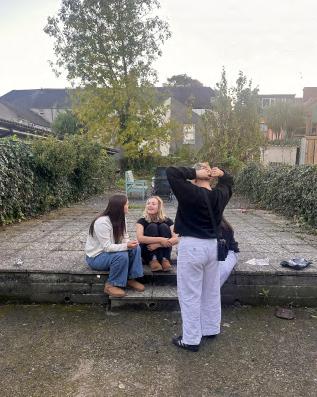


Mae’r broses o wneud ffrindiau’n un rhyfedd - mae’n rhywbeth sy’n digwydd heb i ti sylweddoli.
Dw i dal i gofio fy narlith gyntaf a’r teimlad llethol o gerdded mewn i ystafell yn llawn wynebau anghyfarwydd. Roedd o’n hollol wahanol i’r ysgol, lle’r oedd pawb yn adnabod ei gilydd ers cyn cof. Roedd y diwrnod hwnnw’n teimlo’n frawychus, ond roedd o hefyd yn gychwyn ar bennod newydd. Dw i’n cofio ffonio mam, ei llais yn tawelu fy meddwl wrth fy atgoffa bod cyfarfod pobl newydd yn rhan fawr o brofiad prifysgol. “Mae pawb yn yr un cwch,” meddai fwy nag unwaith!
Yn araf, dechreuais ddod yn fwy cyfarwydd â’r wynebau o fy nghwmpas. Roedd bod yn aelod o Gymdeithas Gymraeg y Brifysgol (Y GymGym) wedi chwarae rhan fawr yn hynny. Trwy eu nosweithiau allan a digwyddiadau amrywiol, cefais gyfle i gwrdd â llu o bobl newydd. Eto i gyd, roedd ffurfio cysylltiadau dyfnach yn her wahanol.

Wrth i’r wythnosau fynd heibio, byddai’r un wynebau cyfarwydd yn gwmni mewn darlith. Dechreuon ni gydweithio ar brosiectau grŵp a rhannu nodiadau ar gyfer traethodau. Ar y dechrau roedd hi’n berthynas syml, ein sgyrsiau’n fyr - cyfarchiad sydyn, sylw am yr aseiniad neu jôc am y noson allan flaenorol.
Yna, bron heb i mi sylwi, dechreuodd bethau newid. Daeth y trafodaethau am waith cwrs yn sgyrsiau hir am bopeth a dim byd. Dechreuon ni gwrdd y tu allan i’n darlithoedd; gan ddod i wir adnabod ein gilydd wrth fynd am dro drwy Barc Bute, neu wrth roi’r byd yn ei le dros goffi. Roedd y teimlad hwnnw yn y ddarlith gyntaf wedi llwyr ddiflannu. Roedd y wynebau a oedd unwaith yn ddieithr bellach yn gysur.
Wrth edrych yn ôl, dwi’n difaru poeni gymaint am wneud ffrindiau. Yn wir, mae hi’n broses sy’n datblygu’n naturiol, yn aml mewn ffyrdd hollol annisgwyl. Felly, byddwch yn garedig i chi’ch hun yn ystod y misoedd cyntaf hynnypeidiwch â phoeni’n ormodol. Dechreuwch sgwrs, rhannwch wên a rhowch amser i bethau. Ymhen dim, bydd y wynebau anghyfarwydd hynny’n ffrindiau oes!
geiriau gan: Lili Ray dylunio gan: Julia Bottoms
Beth yw dy enw?
Beth mae dy ffrindiau yn dy alw di?
Tri gair i ddisgrifio dy hun?
Pa gwrs wyt tin ei astudio ac yn mha flwyddyn wyt ti?
Ble byddwn ni’n debygol o ddod o hyd i ti ar nos sadwrn?
Beth yw dy hangover cure?
Hoff beth am ddinas Caerdydd?
Beth yw dy ‘go to drink’ ar nosweth allan?
Hoff beth am fod yn Cymro/Cymraes?
Beth yw un arferiad gwael sydd gennyt ti?
Beth yw un cyfrinach sydd gennyt ti?
Hoff gân?
Pwy sydd angen cau eu clebar erbyn tro nesaf?

Ifan Meredith
Ifs / Mereds / Meds yw’r mwyaf poblogaidd.
Hwylus, Brwdfrydig, Chwilfrydig.
Blwyddyn 1 yn astudio Newyddiaduraeth a Chyfathrebu.
Clwb Ifor Bach neu’n gohebu/gwylio rali ceir.
Cysgu mewn a Diet Coke – gen i grât yn fy ‘stafell.
Yr holl bobl sy’n siarad Cymraeg!
Seidr
Gallu siarad iaith unigryw a bod yn rhan o’r gymuned a’r diwylliant (a rhoi pregeth irywun ar ôl iddynt holi ‘what part of England is that?’)
Siarad gormod siwr o fod!
Ymddiddori mewn Lego.
Un o fy ffefrynnau yw ‘Ti a Dy Ddoniau’ ar y foment!
Megan Williams
geiriau gan: Llyr Eirug
dylunio gan: Julia Bottoms

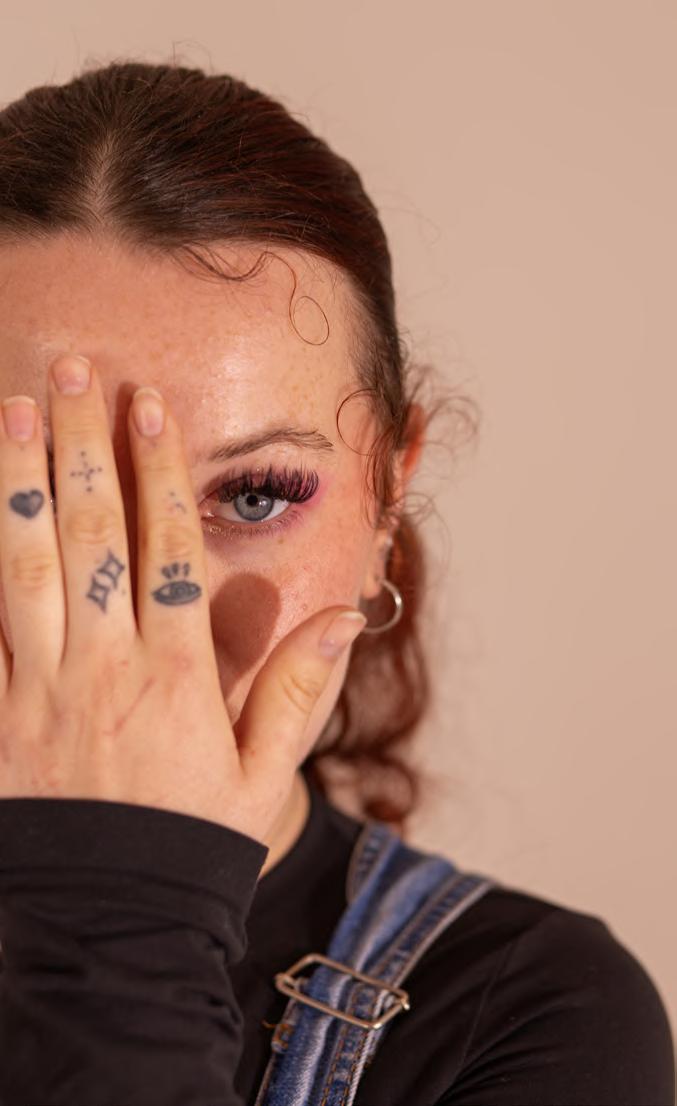
I take my first class on ‘Writing the Body’ when I am 17 and I do not get anything out of it. We read Frankenstein, we read monstrosity, I feel briefly represented when we touch on the idea of a body stitched together but I am immediately lost when the discordant limbs are the limbs of a man. Where, I asked, are the women whose bodies are made of crushed little stars? Are the women whose heads are attached only by a green ribbon? Where are the women confessing such a horrifying truth about their body that the words take shape and attach themselves to her forever? Where are they? I do not feel represented until I read the words I don’t want to have sex because my body feels dead. This devastating phrase bleeds down a beige and white canvas; in its company are viciously composed outlines of women in furious, wine reds, pale pink women fading into pallid cream backgrounds like ghosts. A battered lower body bent over to be headless and still fucked. I recognize all my discordant limbs in the work of Tracey Emin. I am seen, and then I am agonised. I recognise that very few of the women have eyes, and if they have eyes none of them are open, but if they have tits they are uncovered. I recognised that all the titles are knives: “Rape-”, “I need you to love me”, “cut up in pieces and Put together again”. “Part of me, 2022” * price upon request *. It felt almost impossible to consume, and yet I couldn’t stop staring at it. Impossible to consume because I already swallowed it. The reality of all your pain, all that you are, painting over your body until you are an outline.
I wrote about my body until it became an outline. I wrote about my skin, my hair, who touched me and tugged me and how it felt. I wrote essays about men who assaulted me where I was a foreign land and he was an invading army. I wrote myself as my island and a man as the slave trade. My body was a battleground, my body was a free village. If everything was material then it wasn’t a crime, it wasn’t trauma. I subscribed to the idea of ‘good damage’. If it had already happened I could as well write an essay about it. So I engaged in the acts of excavation that so many writers do. I dug myself up for content until I was drained of natural resources; no more oil, no more precious metals. Just a scar on the land that once was worth something.
At the time I was writing my metaphorical body, I abandoned my physical body. We all get so in our heads we forget we’re a human being, right? And then the thing I forgot about got sick. Not the type of sick that goes away, I would love to just have Fresher’s Flu; sick with a litany of things that will never leave my body. And so when Tracey Emin writes, “I don’t want to have sex because my body feels dead” I feel seen. I don’t want to have sex because I forgot my body and I can’t remember where I put it. I don’t want to have sex because my body is not home. It used to be. But then somebody robbed it, and because they robbed it I felt justified to tear out the floors and strip the walls for copper pipes, and then when I moved back in there was no hot water because I’d stripped the pipes. And whoever is meant to fix the pipes has put me on a years-long waiting (yes, I’m talking about the NHS) and in the meantime I have to live in the house. But who wants to live in a house with no hot water? Who wants to have sex in the house and then take a freezing shower? Who even wants to invite somebody in and explain why there’s no hot water? And why I ripped out the pipes in the first place? Hard pass.
Tracey Emin also has these neon images that I find comforting as opposed to devastating even though they all come from the same person. One says “It’s different when you are in love”. I don’t know what work it was featured alongside, I don’t want to know. I love it most out of context because I can think that she is comforting me. She is saying that if you have love around you, everything will be okay. So go to the park with your mates, and try to remember that you are not a house, or a head floating in space, or an outline. You are just a girl.
words by: Sabine Wilson-Patrick design by: Katie Storrie
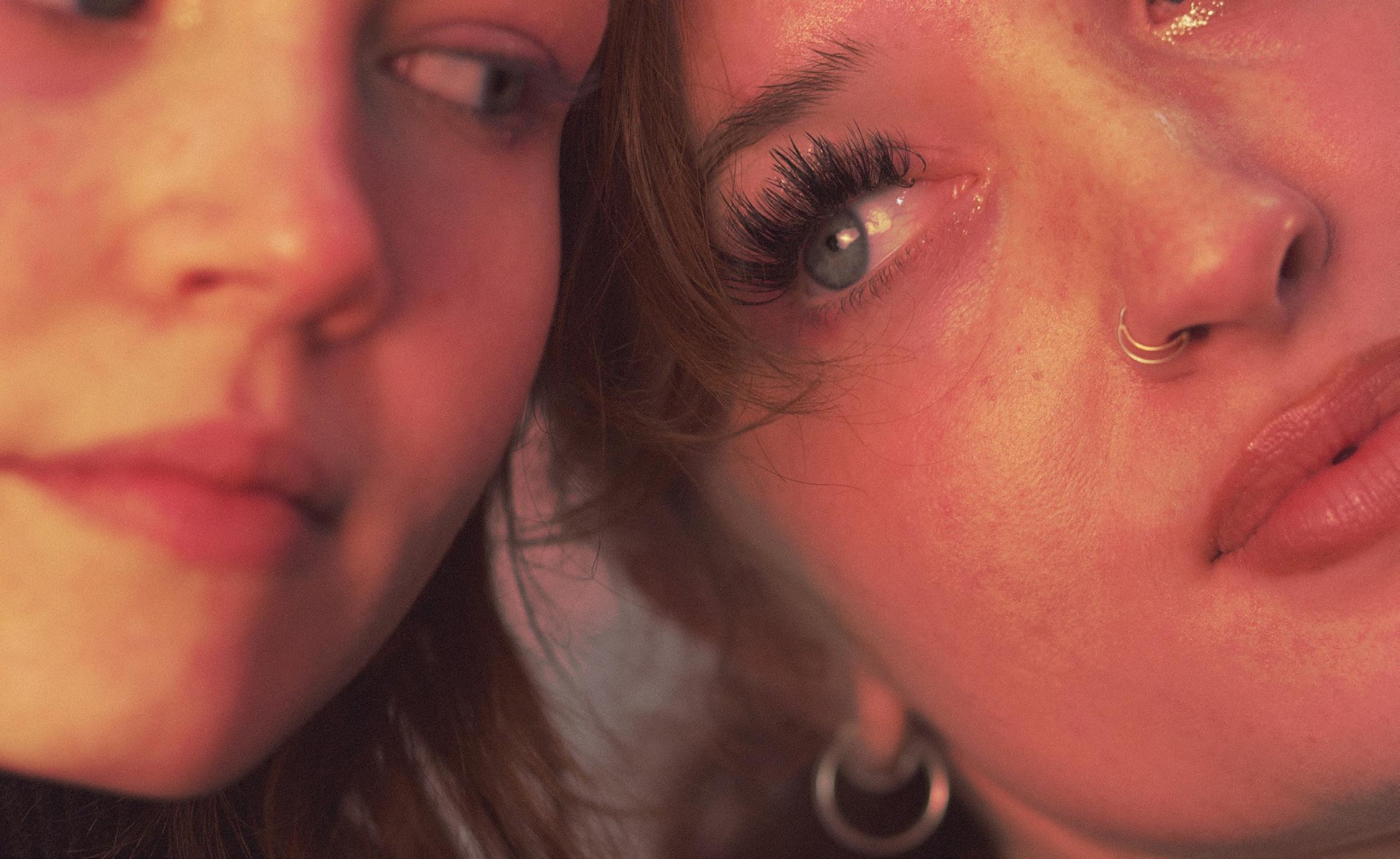


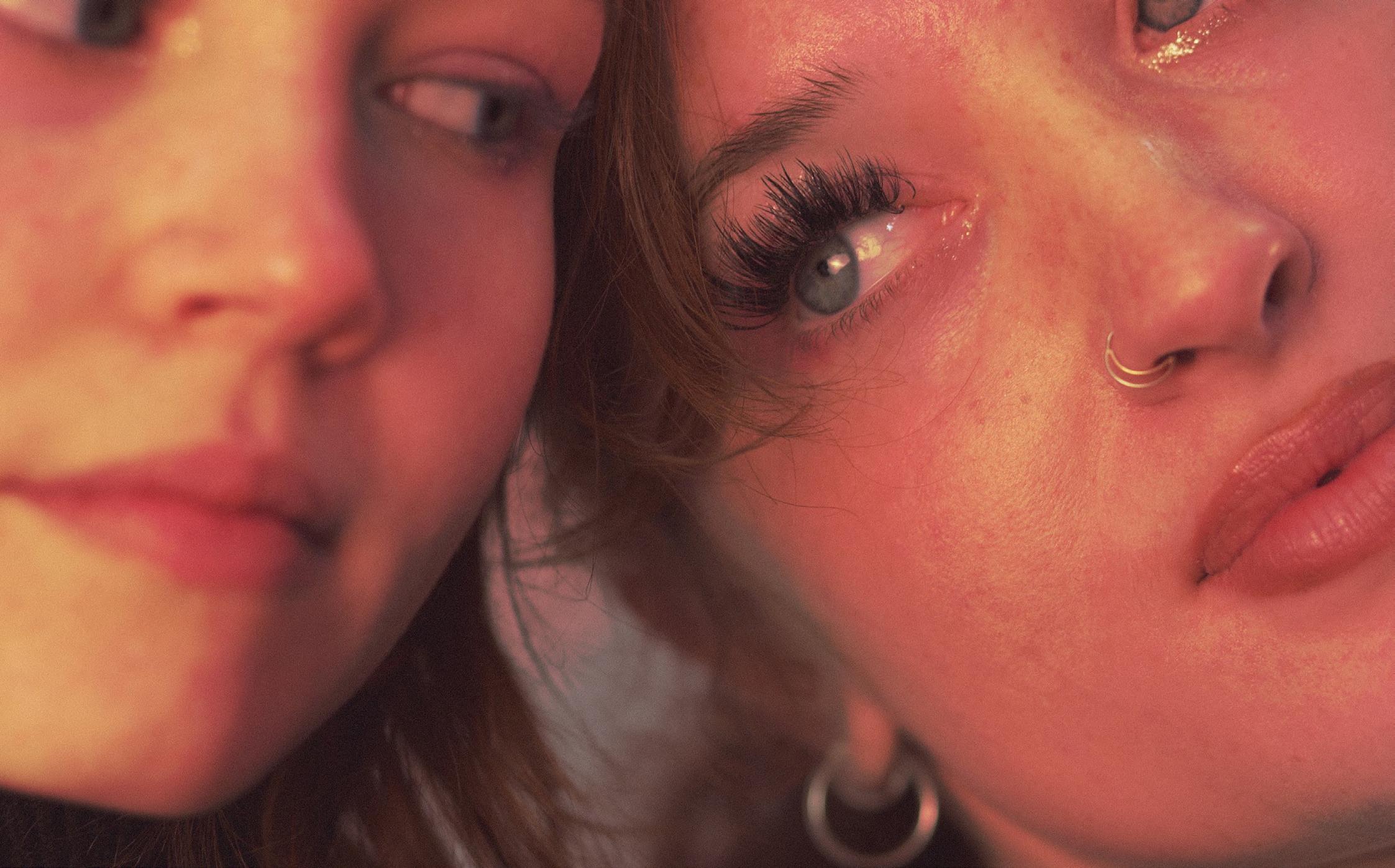



The Kodak Brownie box camera is said to be the first camera affordable to the masses. This led to the birth of the “snapshot”, a huge development from the earlier cameras, which could take 15 minutes to produce an image. However, the Brownie box camera still restricted the photographer to the limitations of film, only wanting to take one or two shots of the same subject to waste it.
Photos have become as disposable as single-use items. The ability to take hundreds of shots of the same subject without having to worry about wasting film has drastically changed our relationships with how we perceive imagery and photography. To continuously press the shutter, aiming for just one percent better. But how does that perfectionist capability of photography on phones compare to that of digital and film photography in the past? And how does that impact how we perceive the importance of photography and what we use it for?

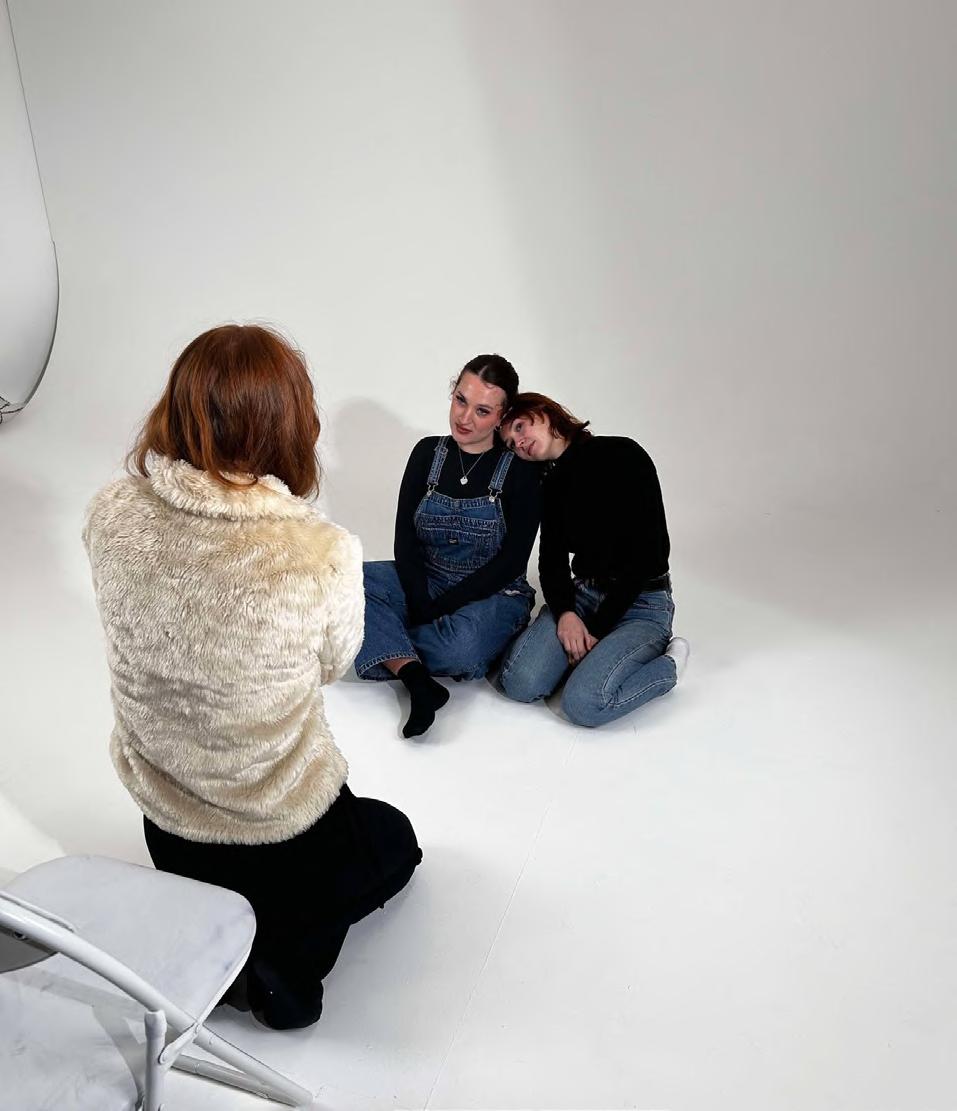
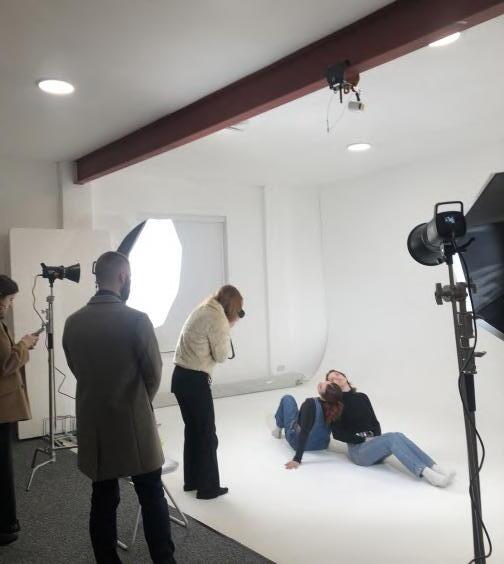
In November, I went on my first independent trip from the UK to Japan. I had been inspired by my mother, who, at the same age of 20, had travelled from the Netherlands to the US. I remember hearing her stories of travelling and wanting to experience it myself. Stories about writing letters back home, scheduling phone calls to family every week and how it was to live over the pond.
Each story was accompanied by images taken on digital and film cameras. These were sent off to be printed and developed to be returned weeks later. Within every image, the memories of the journeys returned, and it was just as much a surprise to find out what exactly the camera lens had captured as it was to be there in the moment.


However, I worried that the unique novelty of imagery on my mother’s travels which symbolised capturing a moment to bring back to her home and share with family and friends would be harder to replicate than the trip itself. The feeling that I would walk around with an Instagram frame ratio in my mind, constantly imagining what photos would look best to post.
Taking inspiration from my mother’s photos of travel, I decided that I would use my phone to take photos for one reason. To stay connected. No pressure to get the best “Instagramable” photo. No self-consciousness about how I looked in the frame. These were irrelevant because I was taking photos to bring back or share immediately to give those who were not with me in person a piece of my experience.
As a result, many of the photos I took were less focused on sightseeing, the landmarks, the spectacular and viral that required a photo to prove I had seen what everyone else was talking about. Instead, a vending machine, an older house, and the smaller elements of a new country I was excited to experience in person created the subject of my images.

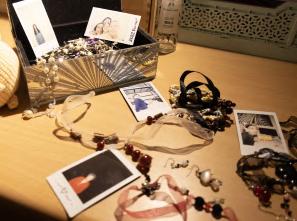
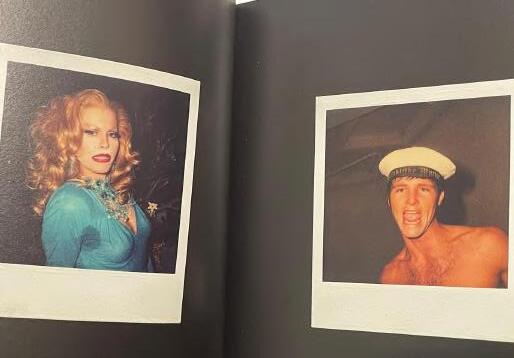
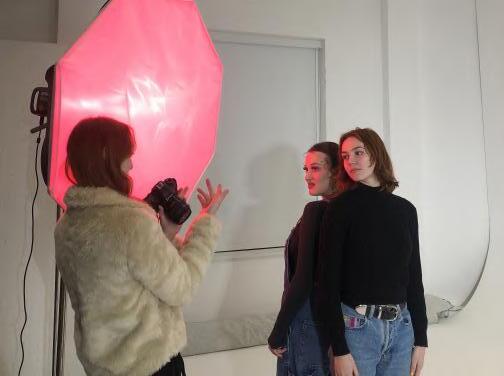
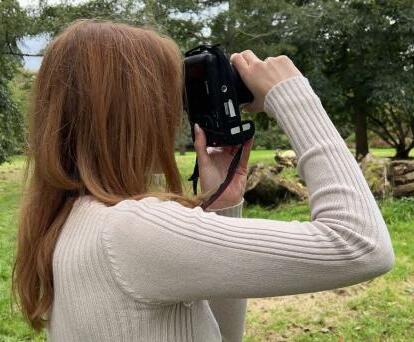
The flexibility that was afforded to me through my phone, its ability to capture 4K video or take selfies, to whip it out of my pocket and take a photo of something I saw outside of the train window all within five seconds, allowed me to keep connected to my family back home and to the travels my mother took. Using my phone to take photos kept me connected to my loved ones at the moment but miles away in distance and to the stories that inspired me to take the journey miles away in time.
I am forever grateful to my mother, who kept all these printed photographs and did not “delete” them from her gallery. When I look at the photo gallery on my phone, I ask myself if I, like my mother, would enjoy one day, twenty years in the future, logging into my iCloud storage, as she will sometimes unlock the cupboard, scroll down to 2024, like she will flick back to 1990, and be reminded of the time I travelled away from her for the first time at age 20, like she will remember travelling away from her mother at age 20.
words by: Amber Al-Wafai design by: Isobel Blunt



February, the month of romance, brings the end of winter and beckons in the beginnings of spring - the season of rebirth. It’s also the month when we celebrate Valentine’s Day. Yet, the modern holiday is a far throw from its humbler beginnings.
It all began with the legend of Romulus and Remus, the twin nephews of the ancient King Amulius, and the founders of Rome. As punishment for their mother’s broken vow of celibacy, the King sent his nephews to be thrown into the Tiber River. A ser\vant took pity on them and instead of letting them drown, placed them in a basket. Legend says the rivergod carried the basket until it reached a fig tree where it got caught in the branches and was discovered by a shewolf. She took them to her den at the bottom of Palatine Hill where the twins were found and adopted by a shepherd and his wife. Once grown, they sought revenge on their uncle and restored the order of the throne. They also found the she-wolf who saved them and lovingly named her Lupercal. Thus, the festival of Lupercalia was created to celebrate the she-wolf that led to the creation of the city.
In celebration, ritual sacrifices were made by Luperci, a group of Roman priests. A great feast would be shared and afterwards, the Luperci would cut strips from the animals’ skins and run, while striking women who came too close. Men would also choose a woman’s name from a jar to be coupled up with for the duration of the festival, leading to many falling in love and marrying. In the late 5th Century AD, Pope Gelasius the First outlawed Lupercalia, and declared February 14th as a day to celebrate the patron saint of lovers, Saint Valentine. Despite its Pagan roots, Valentine’s Day kept some Lupercalia traditions. The colour red has been associated with the ritual sacrifices and the feast since Lupercalia, and then to the Feast of Saint Valentine.
But who was Saint Valentine? Why was there a feast in his name?
The most common origin story for Saint Valentine comes from the 3rd Century AD, when a man named Valentine was discovered secretly marrying Christian couples by the Roman Emperor Claudius II. At this time,
Christians were persecuted by society and assisting them was forbidden by law. This led to Valentine being imprisoned and later executed after unsuccessfully trying to convert Claudius to his faith. The Catholic Church declared him a Saint and listed him in Roman Martyrology as being martyred on February 14th. Literature has made further connections with Valentines and love. Chaucer’s poem, The Parlement of Foules, makes the initial association with Valentine’s Day as a special day for lovers. Later poets, such as Shakespeare, continued this link until its growth into what we know today.
So, how did we get from feasts to the commercialised Valentines of today?
As typical in modern society, Valentine’s Day has become overly commercialised with the focus more on the gifts we give rather than the love we share. In the 18th Century, couples began exchanging handmade gifts. Industrialisation introduced mass-produced cards, and from then, it was no longer just cards that were marketed to couples, but everything from flowers to chocolates to jewellery and nights out. Richard Cadbury was the first chocolatier to produce heart-shaped boxes that were marketed as also being able to store love letters and other mementoes, which he called ‘The Fancy Box’.
In 2025, Valentine’s Day is a highly commercialised yet celebrated holiday. What started with a celebration of fertility and of the creation of Rome has become another cog in the capitalist machine that places profits above people and, especially in this instance, above human connection. Maybe it’s time we reject this in rebellious retaliation and go back to spending the day frolicking naked with our jar-chosen lover. Or, just have a romantic night in with a home-cooked meal and good company. To each their own, whichever you prefer.
words by: Megan Ingram-Jones design by: Ola Rzeszut illustration by: Olivia Nilsen


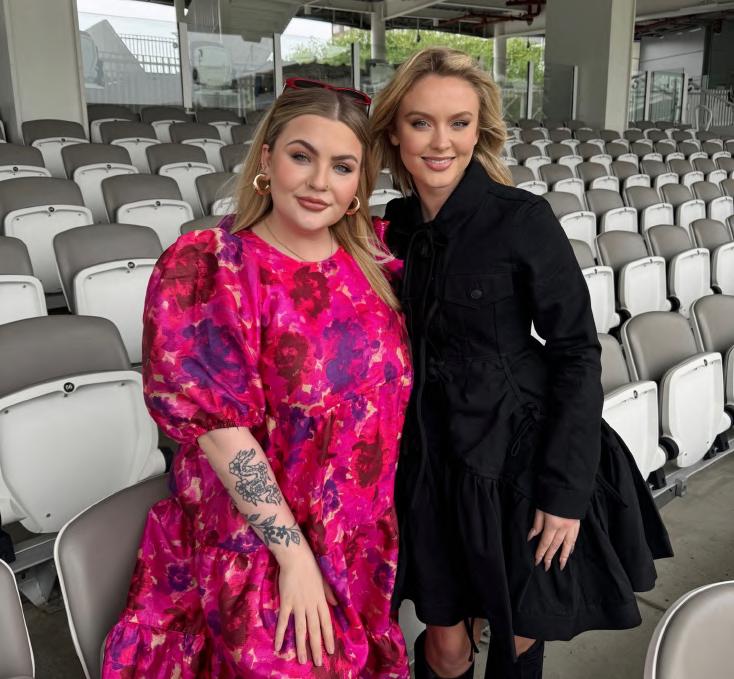
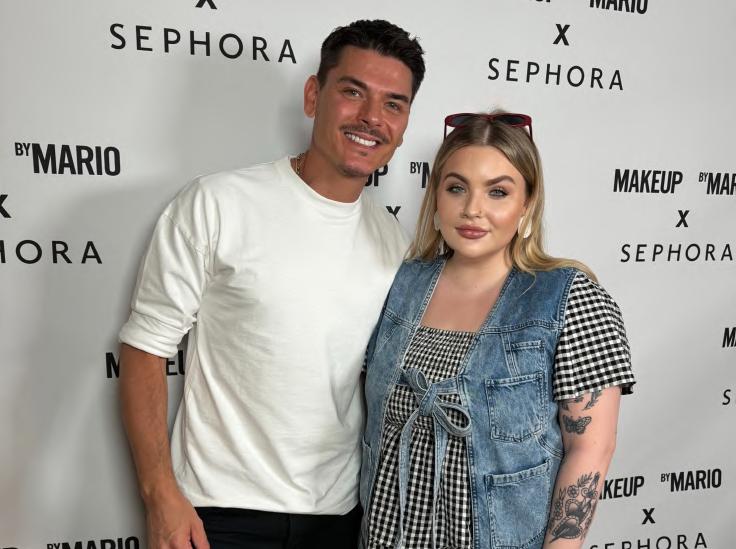
In her current role as a freelance presenter, Mared Parry has hosted the award winning show, Tisho Floc? on S4C’s Hansh, winning Best Social Series at the New Voice Awards in 2023. Mared is also an active campaigner for the protection of children online. After awful experiences in her youth, Mares campaigned for over 6 years for the introduction of the Online Safety Bill, speaking numerous times in Parliament and working closely with the NSPCC. She was also one of five people invited to be present in the House of Lords as the law was passed.
What inspired you to create Welsh language content, and advocate for its necessity?
Welsh is my first language, and I’m very, very proud to be a first-language Welsh speaker. It’s always been a part of my life – my family, my friends – everyone around me speaks it. So creating Welsh-language content wasn’t a conscious decision for me; it was just doing what felt natural and right.
It’s been so well-received, and it’s opened so many doors for me in my career. For me, it’s hugely important to keep the language thriving and to make cool, engaging content that appeals to young people.
There aren’t enough Welsh-language speakers on big platforms. Media networks rarely give the Welsh language the attention or funding it deserves, and there’s a misconception that Welsh isn’t widely spoken. It’s not just about language, though – it’s about representation as a whole.
We need to see more geographical diversity. For example, Sian Eleri, a BBC Radio 1 presenter, is from North Wales, and it’s incredible to hear her accent on such a big platform. But we need more people like her – diverse voices who can showcase what Wales, and the Welsh language, are really about.
What inspired you to pursue a career in journalism and who was your biggest influence?
I’ve always enjoyed being a part of the media in some way. When I was a kid, I appeared on S4C, the Welsh-language TV channel quite a lot, and it excited me so much. From a young age, I always loved being in front of the camera and being involved in the media industry in general—it’s something that’s always felt right for me. I wasn’t sure exactly what I’d do, which explains why my career has been so varied, but I knew I wanted to be part of it in some capacity.
In terms of prominent people I looked up to, I remember seeing Fearne Cotton on TV when I was younger and thinking, “I want to be just like her.” Alex Jones, who is a Welsh TV presenter, was another big inspiration.
What is your biggest career highlight to date?
My first big celebrity interview, whether it was Michelle Keegan or Matthew Morrison (I can’t remember which!), felt huge. Interviewing them at the Heart Radio studio made me think, “Wow, I’m a legit journalist.”
Getting my first article published at Fabulous Magazine was another pinch-me moment, and working my first red carpet at the Pride of Britain Awards in 2021 was massive. The biggest one more recently has been getting my own dating show, Tisho Fforc?, on S4C.
What changes have you seen in online safety laws since you began working with the NSPCC, and what more do you think needs to be done to protect children online?
The biggest change has been the passing of the Online Safety Act 2023. That’s something we worked on for years as part of the NSPCC campaign, and it’s been amazing to see it go from the early stages of being a draft to a bill, and then finally being passed into law.
I was lucky enough to witness it being passed in the House of Lords. Seeing it all come to fruition was incredible, especially knowing I’d played a part in making it happen.
That said, there’s still so much work to be done. The law is a massive step forward, but the implementation will be key, and we need to keep holding platforms accountable to to protect children online.
What advice would you give to students wanting to start out in the media industry?
Network and socialise with as many people as possible. Take every opportunity that comes your way because you never know where it might lead.
When I was at Cardiff, I never said no to anything—whether it was applying for awards, working on features, or meeting people from other universities. That’s what led to my first full-time job at Fabulous magazine.
I got that job before I graduated because of a contact I made through student media. That connection led to an internship, which then turned into a job offer.
So, my advice is to throw yourself into every opportunity, build relationships, and take student media seriously. It can open so many doors.

